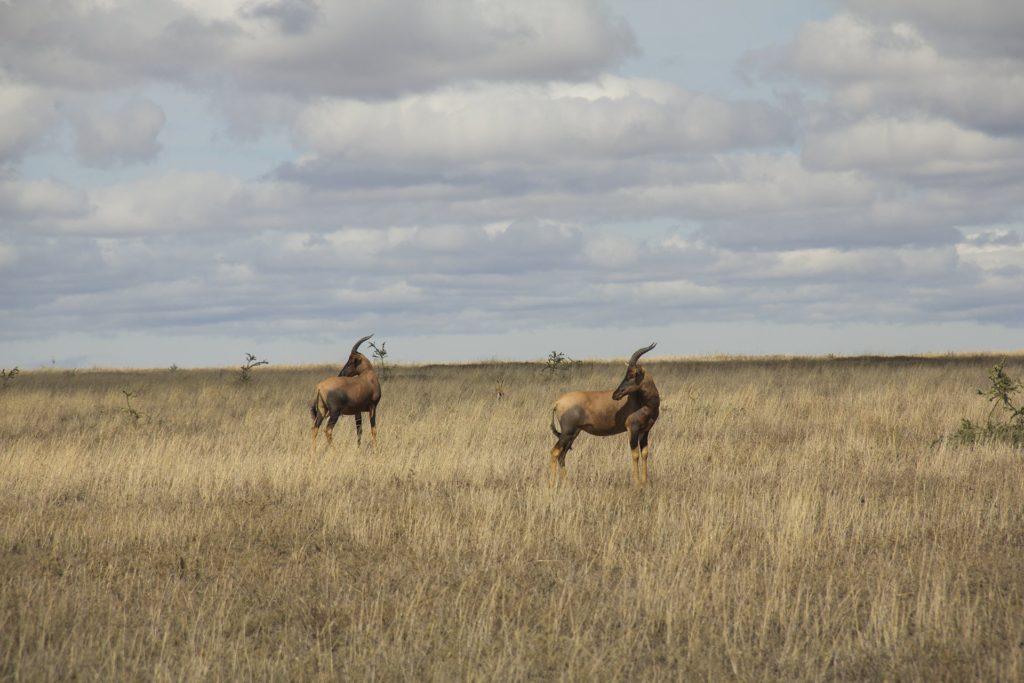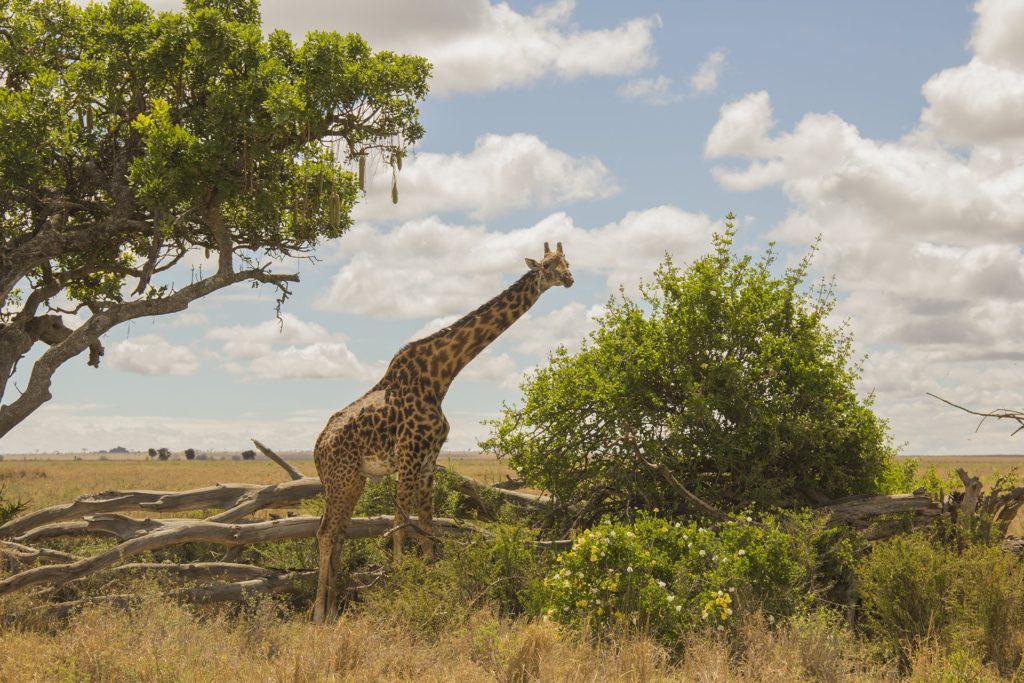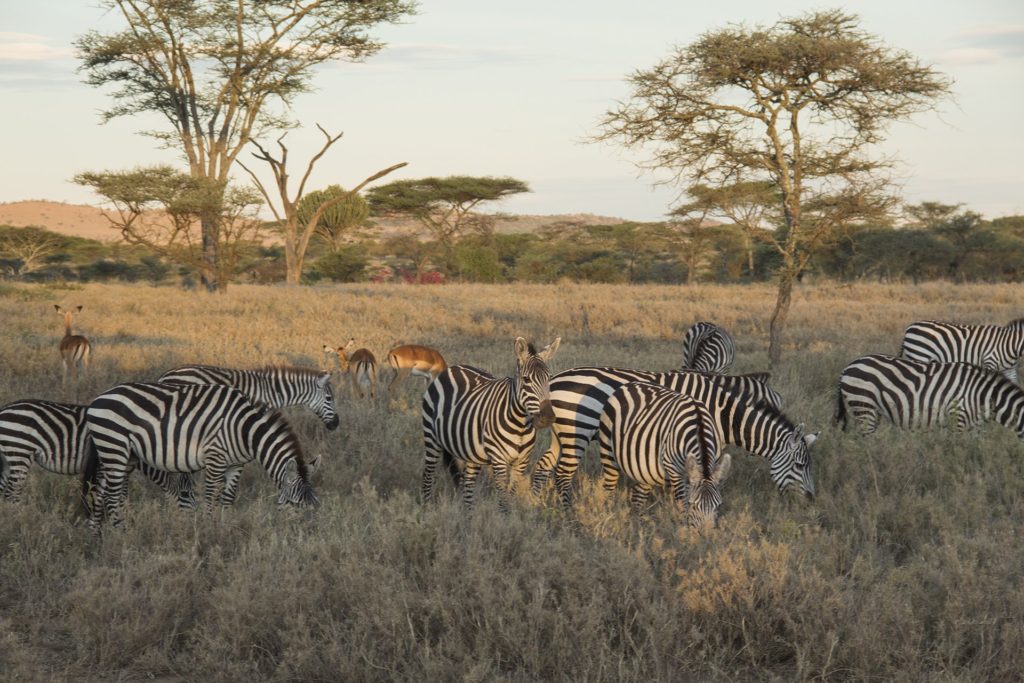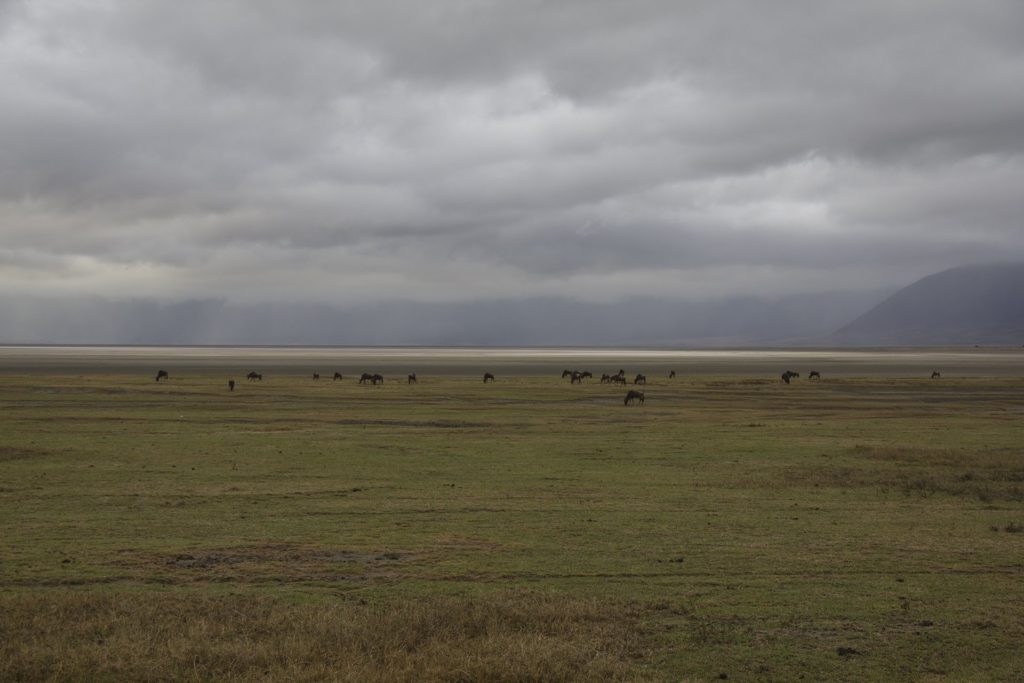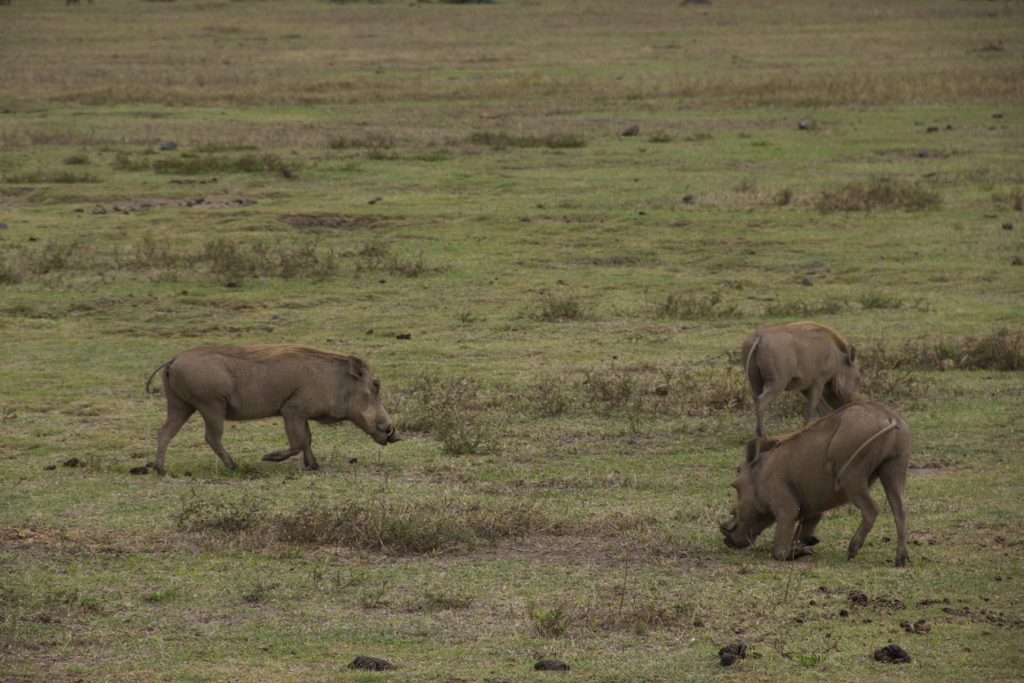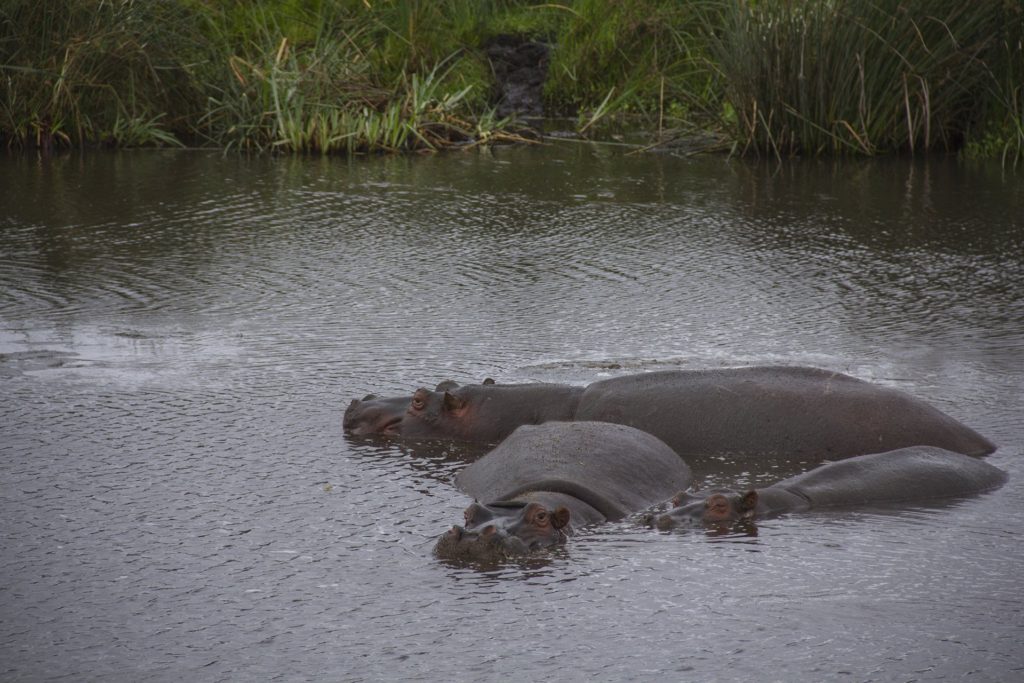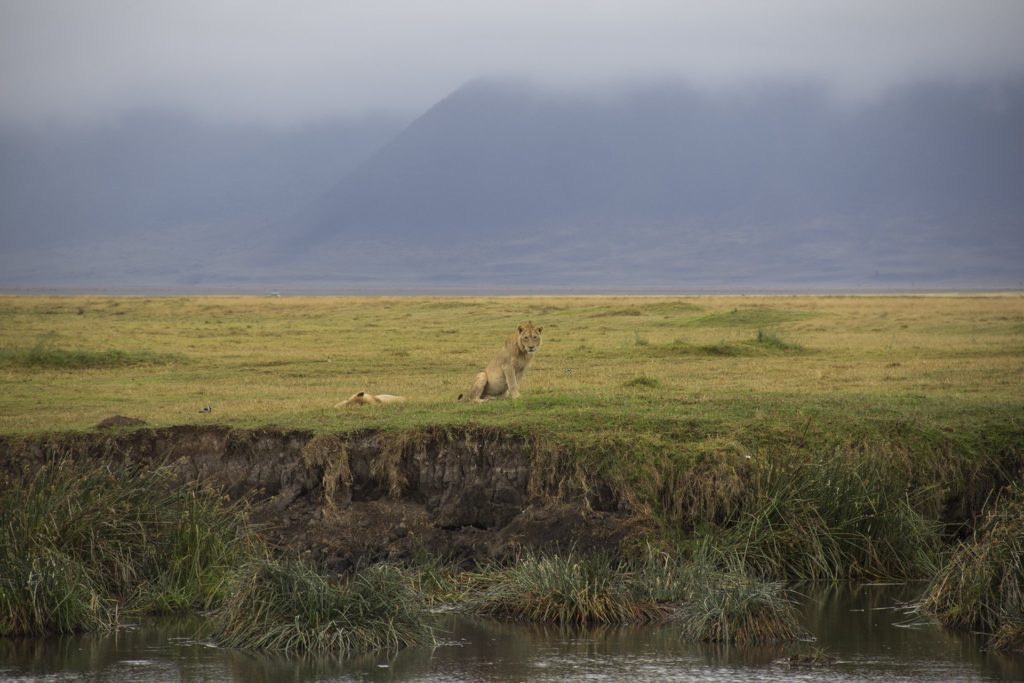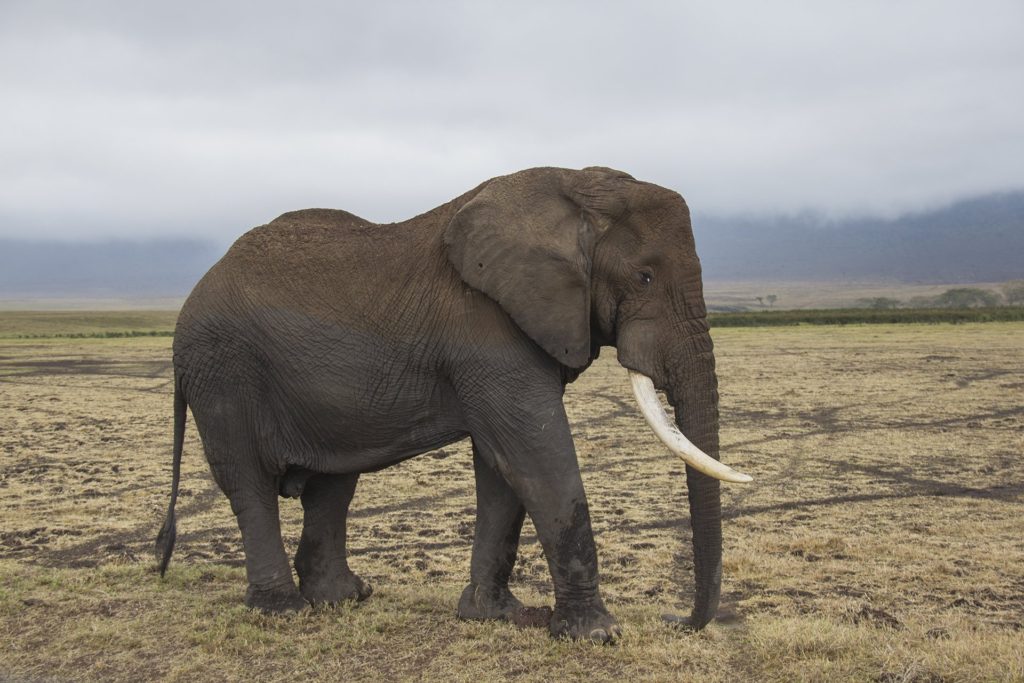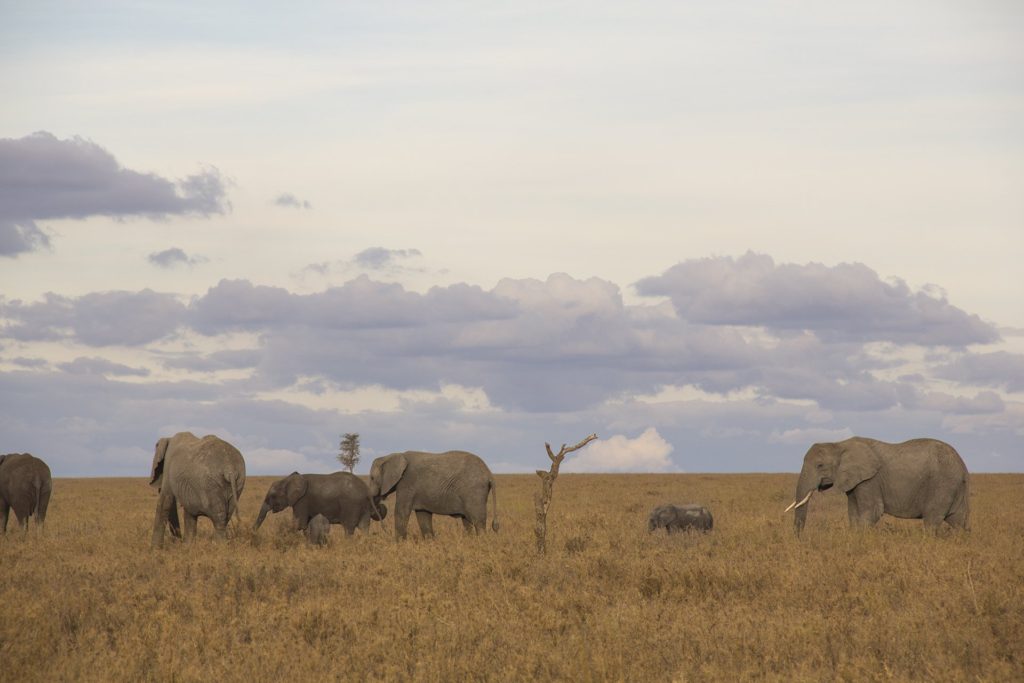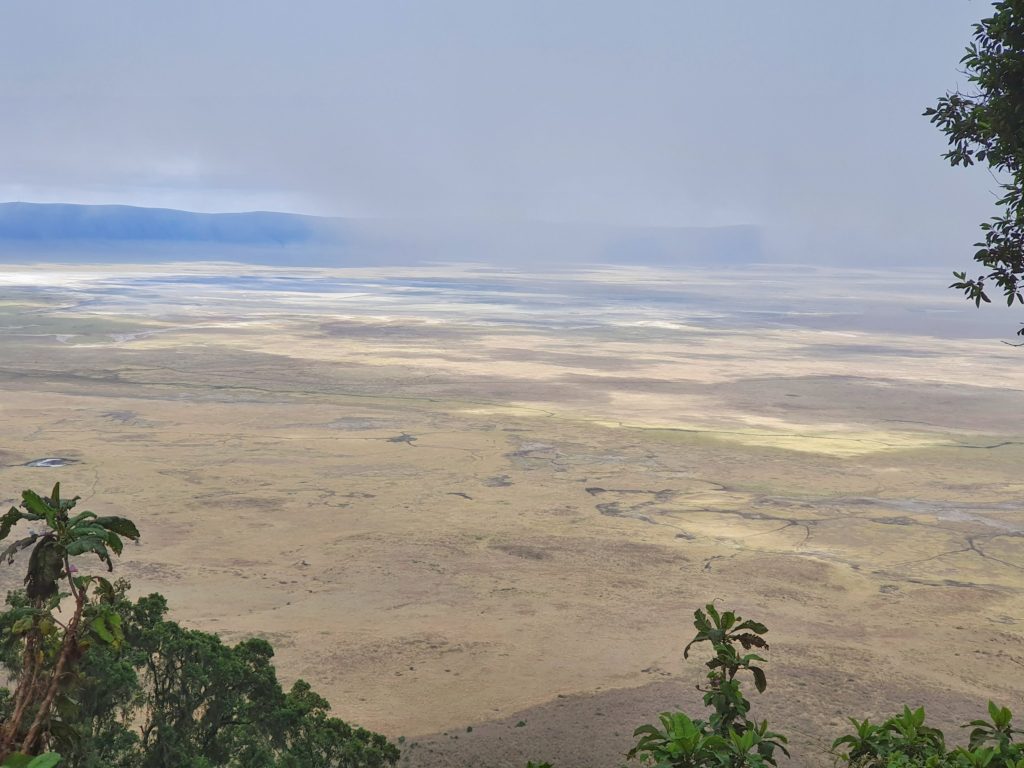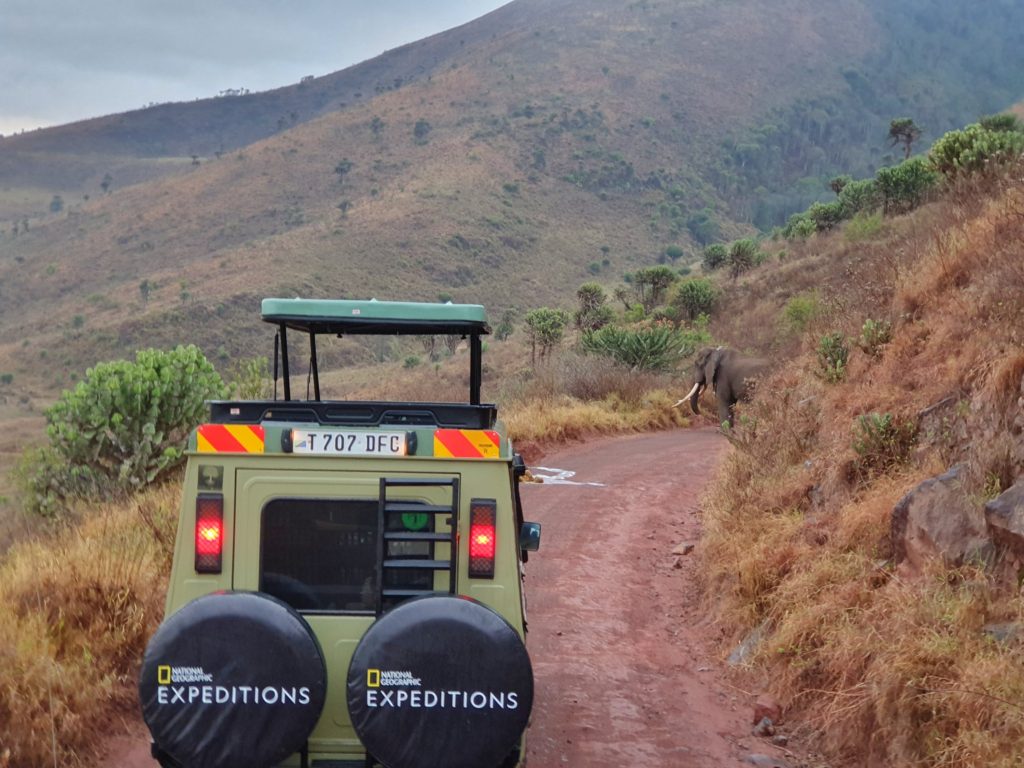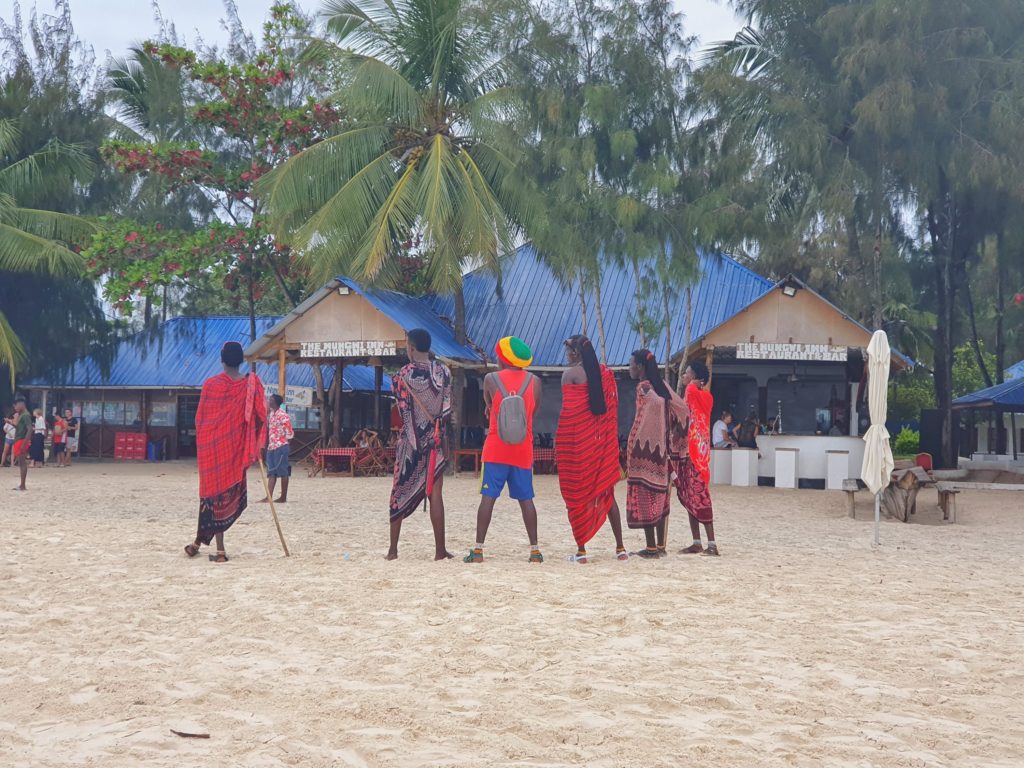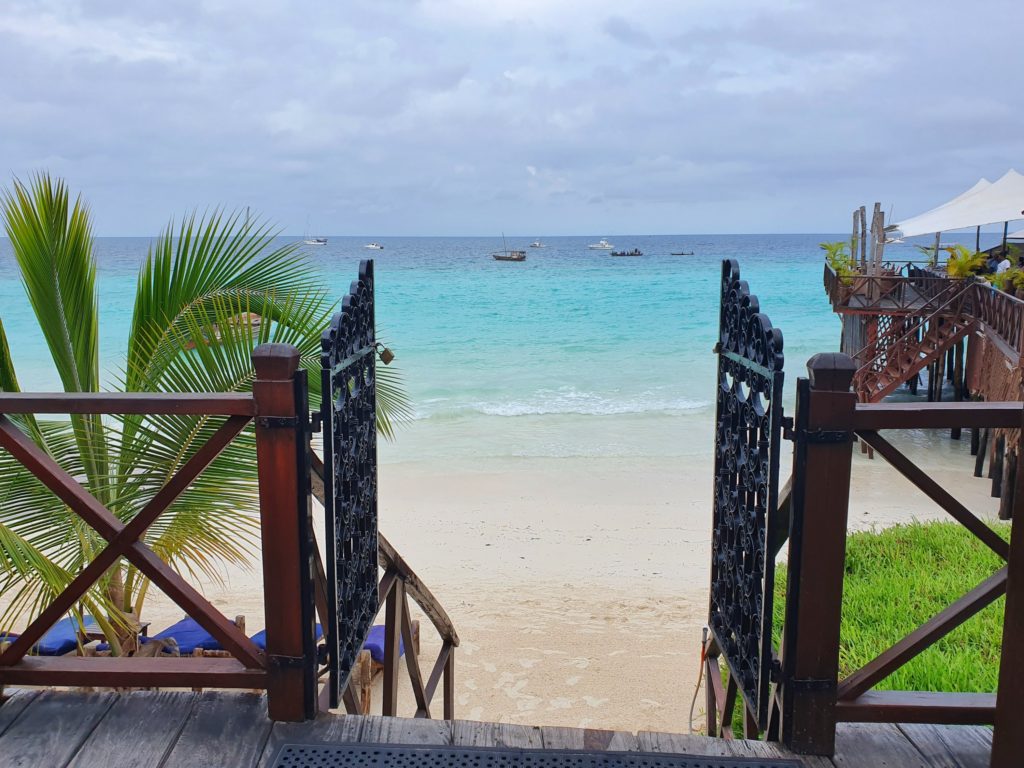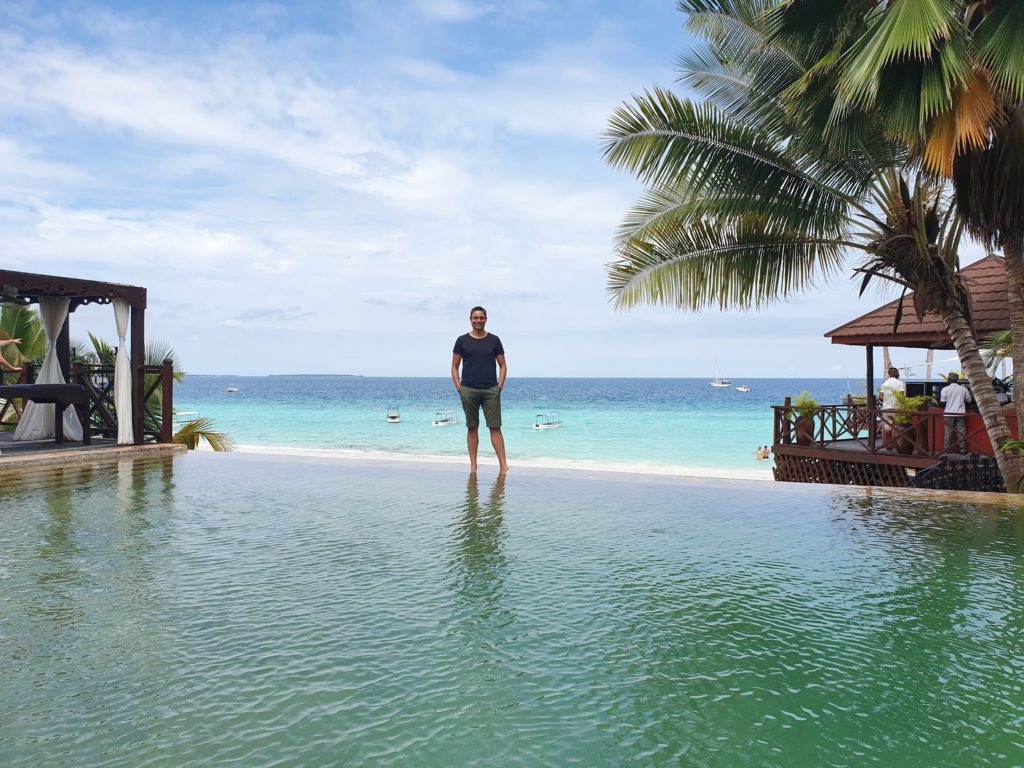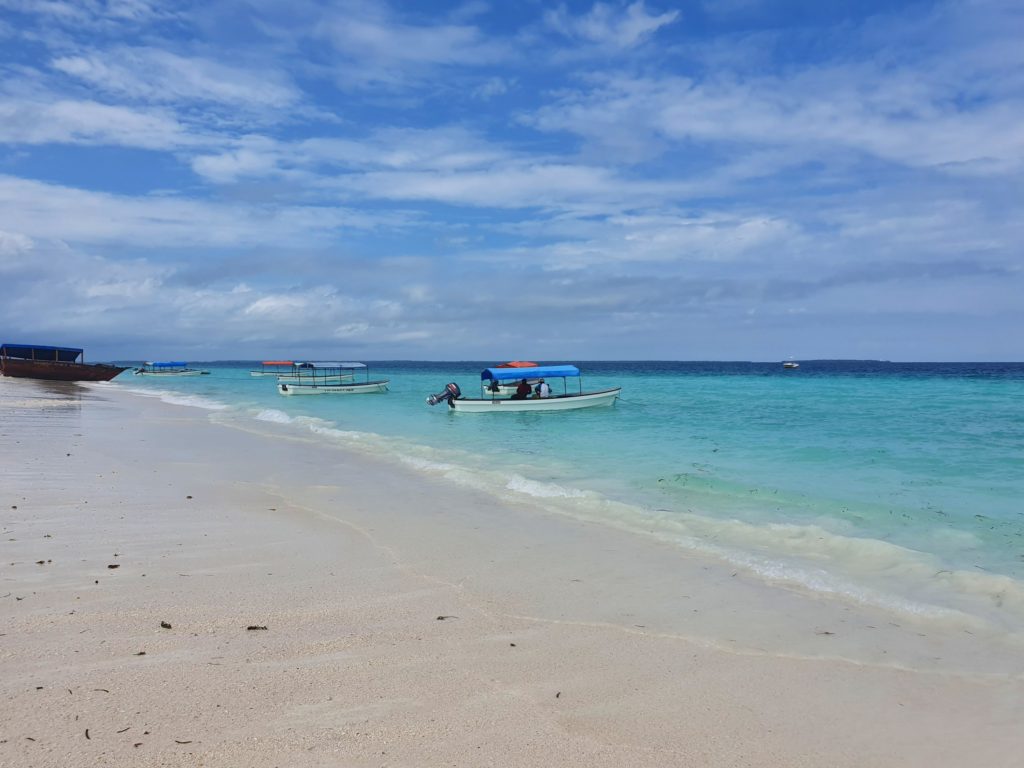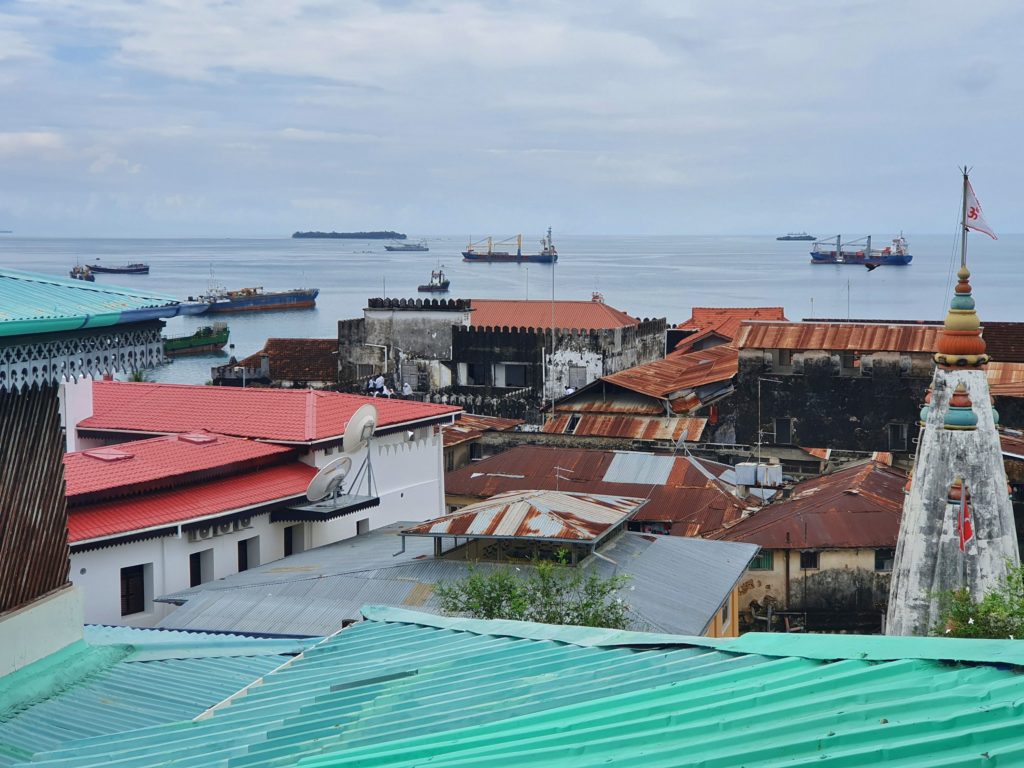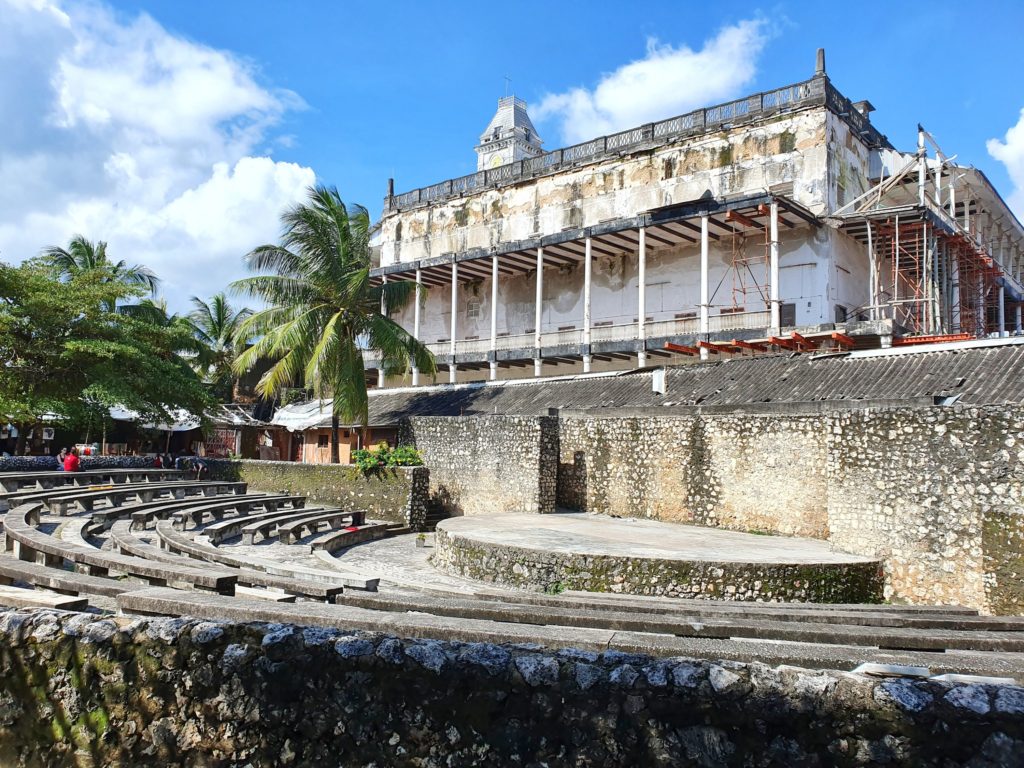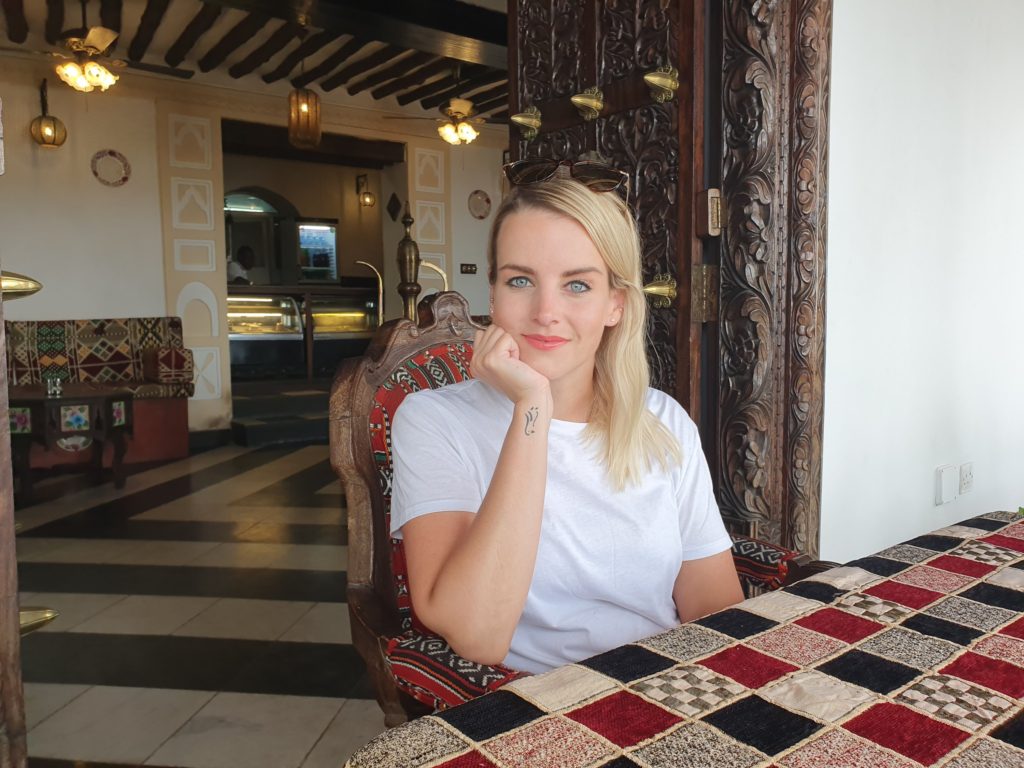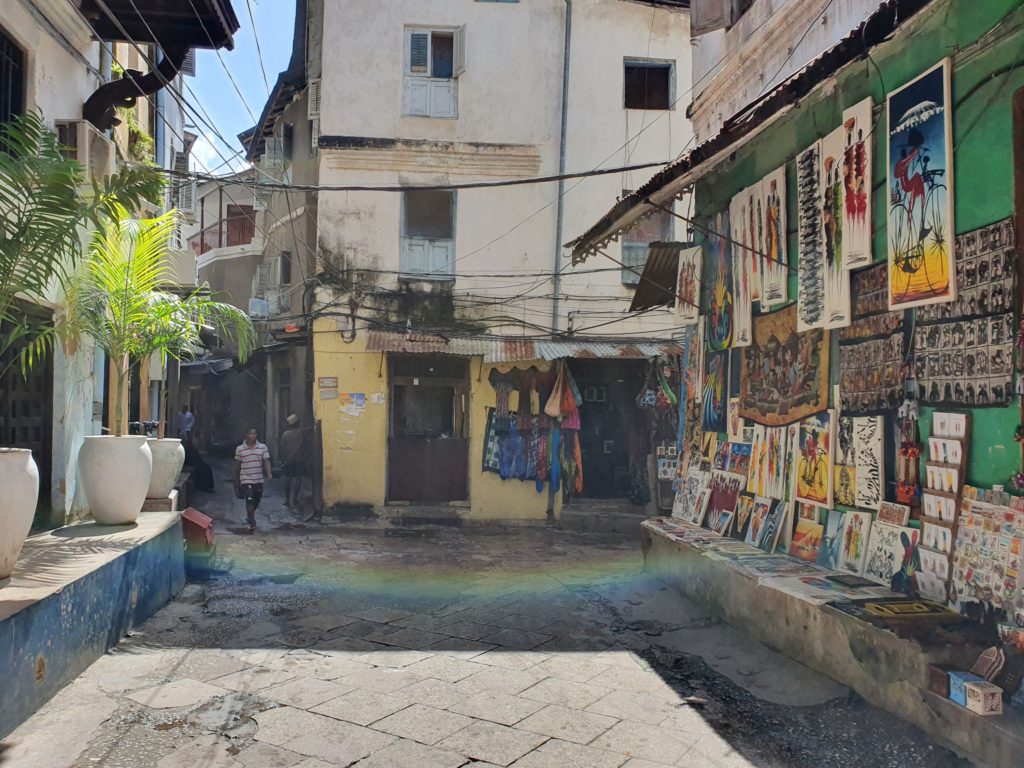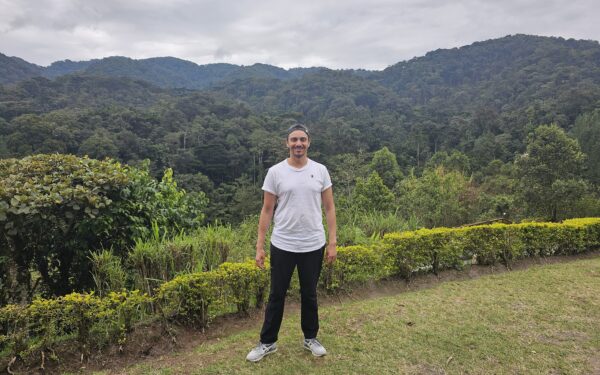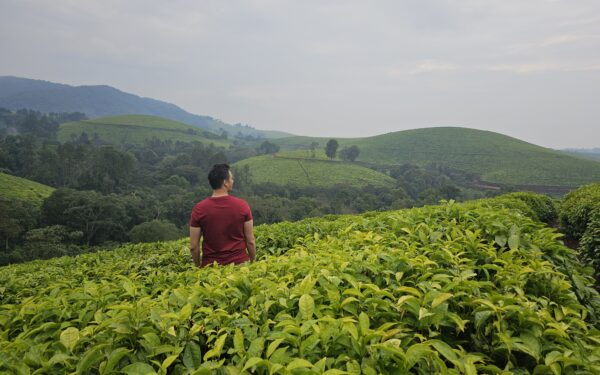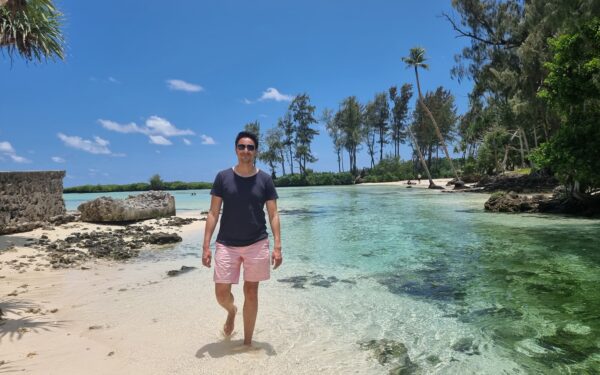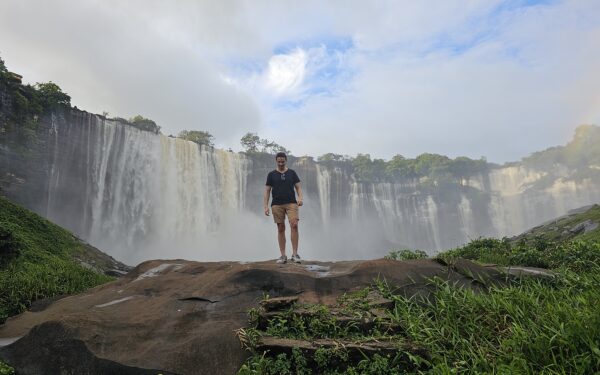Trip Report: Tanzania
visited in October 2019
It was almost midnight when Kati and I landed in Dar es Salaam, Tanzania’s largest city. Tanzania was my 94th country and for Kati it was the 20th. Funnily enough, Tanzania should have become my first African country ever in 2015. Back then, I had already finished planning my trip to Tanzania, but changed my mind to India in the last minute. In the meantime, four years have passed and Tanzania became my 19th country on the African continent.
There are three main activities for tourists in Tanzania: Safari, Zanzibar and Mount Kilimanjaro. If you want to experience all three, you have to spend about three weeks in the country. We only had 1.5 weeks and opted for the first two activities. You need one week to hike Mount Kilimanjaro and we did not have so much time anymore.
Our first two days in Tanzania were basically transit days. After the first night in Dar es Salaam (near the airport, we did not see the city) we took a flight to Arusha, where we organized the safari for the next four days. I can’t tell you much about Arusha as we spent most of our time organizing the safari.
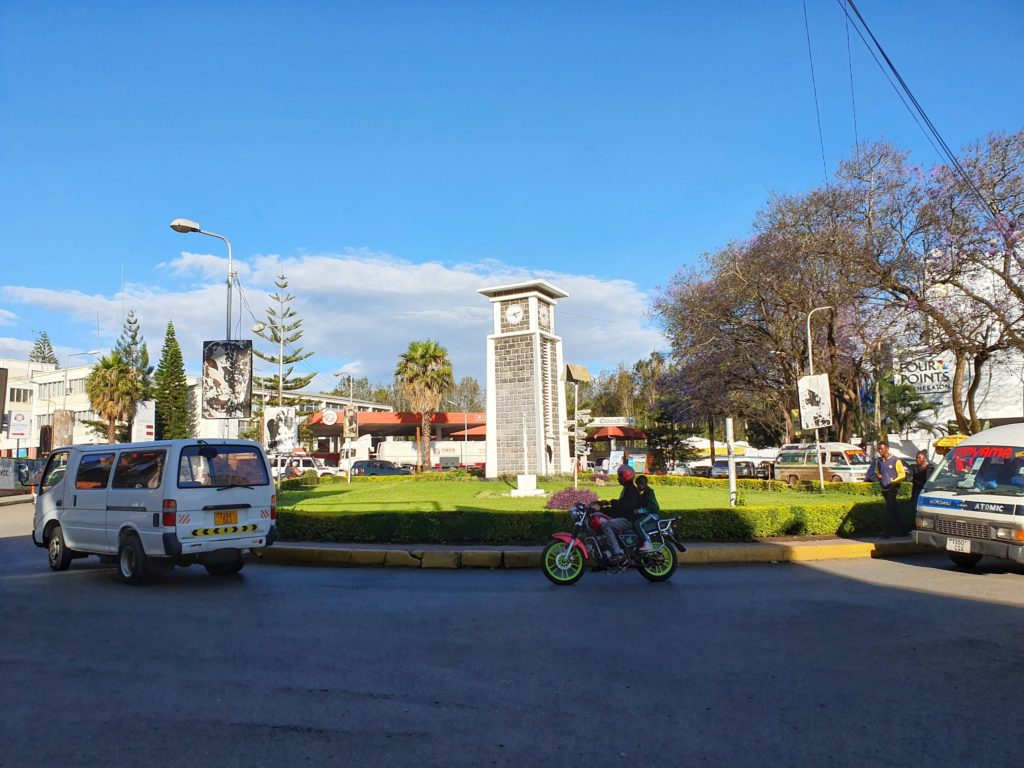
There is not much to do in Arusha anyway. The tourist infrastructure is pretty good, as there are a lot of hotels, travel offices and restaurants with western food. All in all, I would still recommend to keep your stay in Arusha as short as possible.
How to book a budget safari in Tanzania
In order not to make this article any longer than it already is, I have packed all facts about the organization of a budget safari into THIS article.
Tanzanian Safari
Our driver met us in front of our hotel in Arusha at 6.30 AM. It was going to be a long day, but our excitement was nevertheless enormous. We looked forward to the Serengeti the most on this Africa trip, as we never did a multi-day safari before in our lives.
It took a little more than two hours to get to a camp site near Lake Manyara National Park. The many baboons we saw shortly before arriving at the camp were a foretaste of what we would experience the next few days.
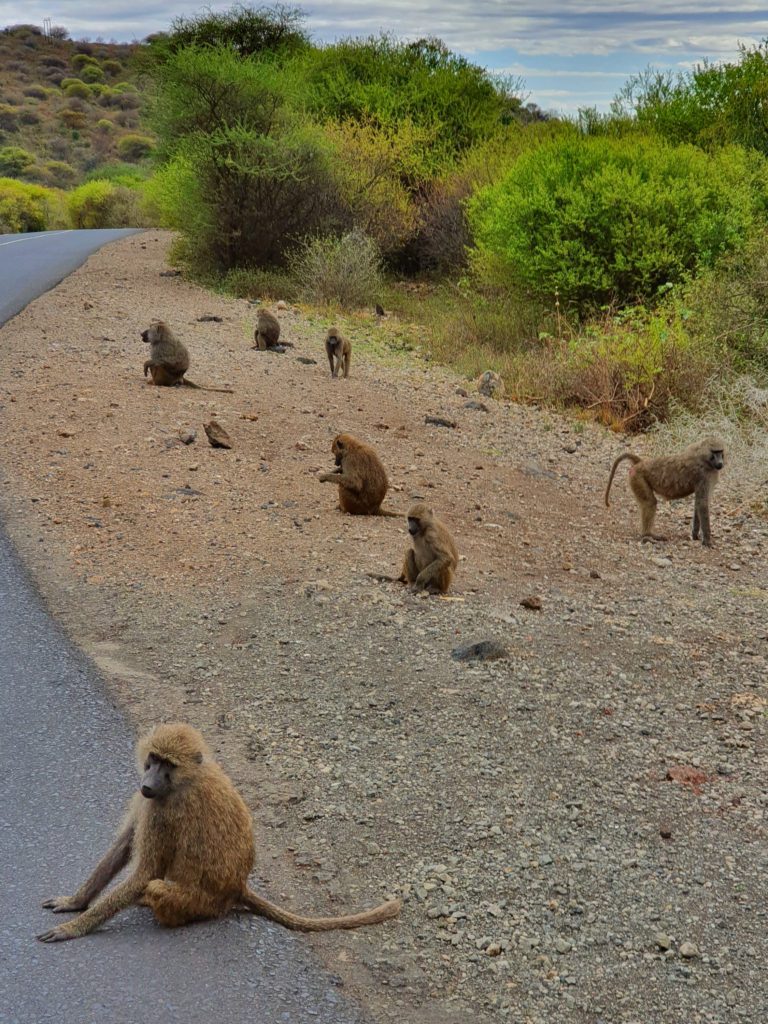
At the camp site we met Karim and Shaar, a Dutch couple of our age. With them we would be on safari for the next days. On group tours it is always a matter of luck whether you are with cool people or not. With Karim and Shari we were extremely lucky. They were so nice and we couldn’t have imagined better people around us for the next days.
I’m not going to go through all our activities day by day because that would be beyond the scope. But in the following paragraphs I try to give an overview of what a four day safari looks like.
Basically: on all four days we did a game drive, which lasted between three and five hours. There was never really an evening program. Since most of the tours started at 6 AM, we went to bed early every night.
Here is an overview of the parks we visited:
The Serengeti National Park
With almost 15,000 square kilometers, the Serengeti National Park is one of the largest in the world. Plus also one of the most famous. For us it was the park where we spent the afternoon of the first day and the morning of the second day.
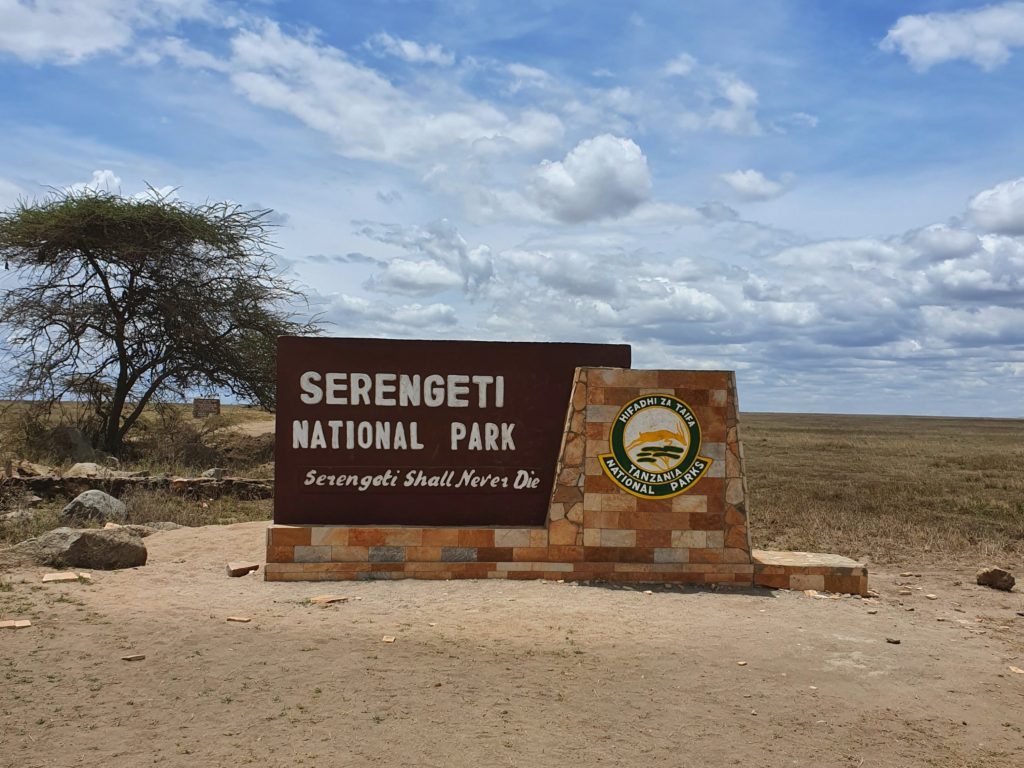
I would like to mention that we already did a safari in Eswatini and Malawi on this trip. In these game drives we saw animals, but sometimes it took 30 minutes or more to see the next animal. In the Serengeti it’s different, completely different. It rarely takes more than five minutes to see the another animal. The animals just seem to be everywhere. This makes the safari extremely entertaining.
The good thing is that the diversity of the animals is enormous. While some national parks in the world only have a selection of animals, the Serengeti has all the animals you would expect on a safari. The big five (elephants, lions, rhinos, buffaloes and leopards) for example. Apart from rhinos, we have seen all of them. Fortunately, we have already seen enough rhinos in the Hlane Royal National Park in Eswatini.
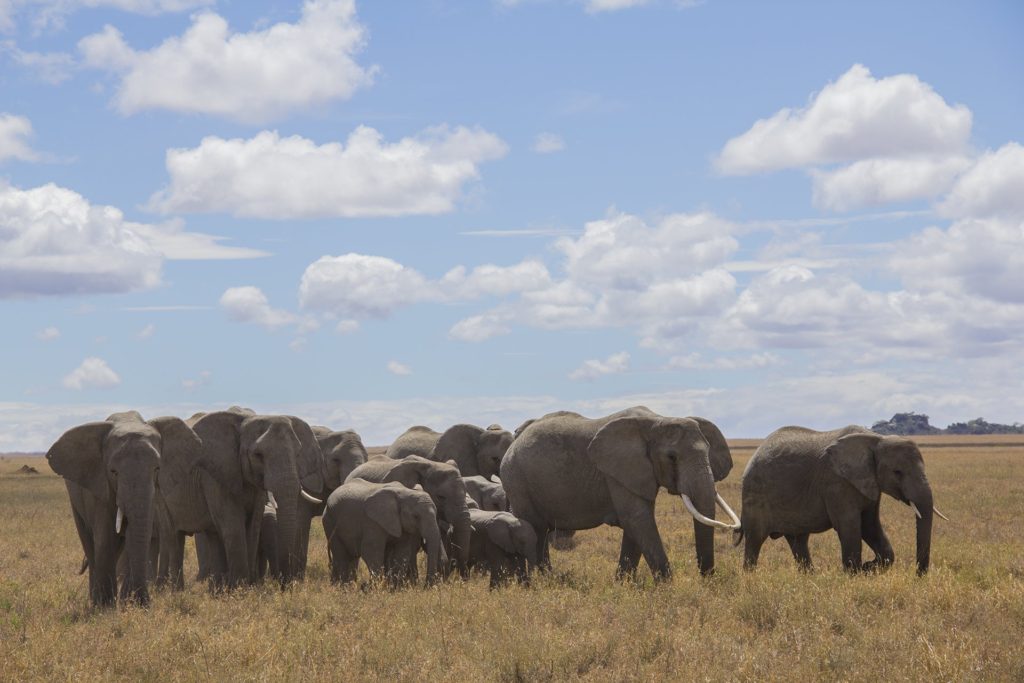
Of the big five, lions were the ones we saw the most. Sometimes we saw a group sleeping and sometimes one or two lions were resting under a tree. The highlight was when we spotted a lion eating.
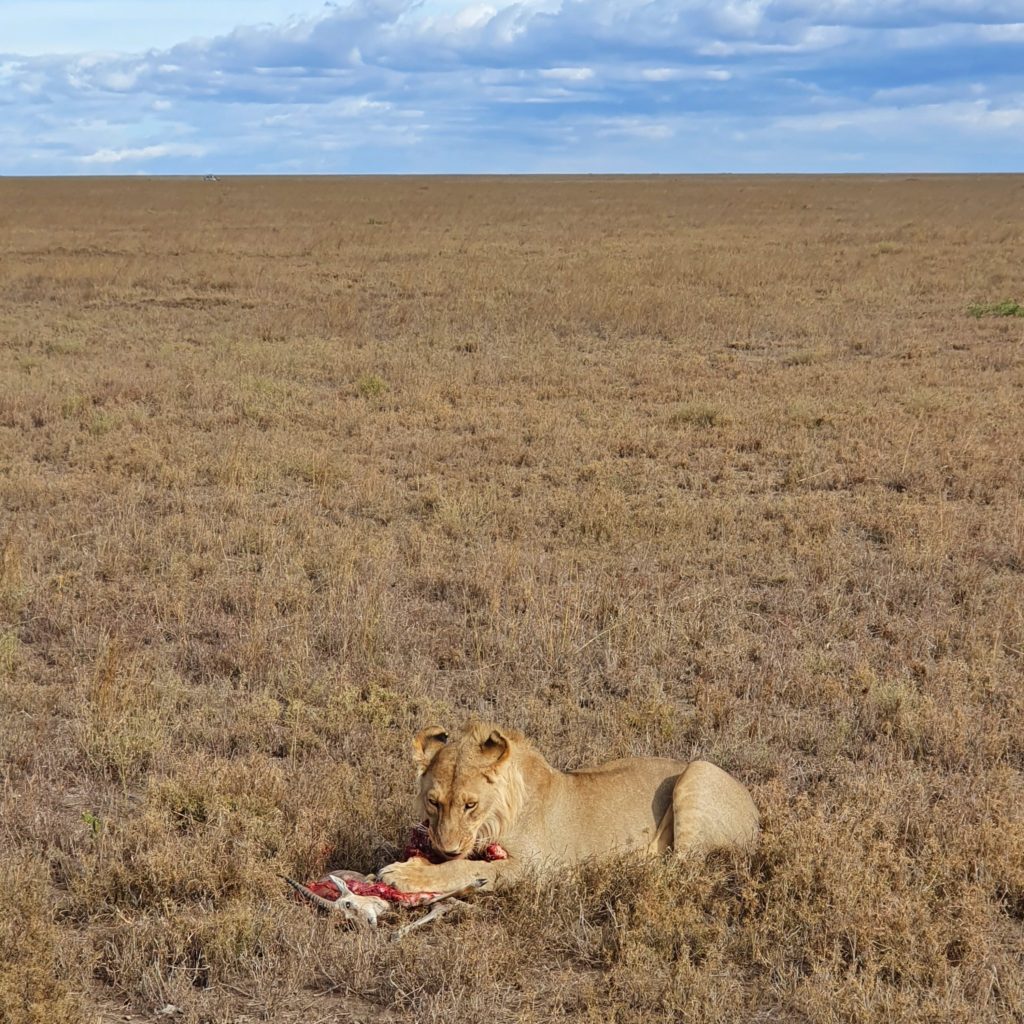
Another highlight was that we saw a leopard mother with her cub walking through the savannah. According to our driver, the chance of seeing a leopard during a Serengeti safari is less than 40%. So we were all the happier to see this animal. After seeing these leopards, I now have seen all the animals of the big five in the wild.
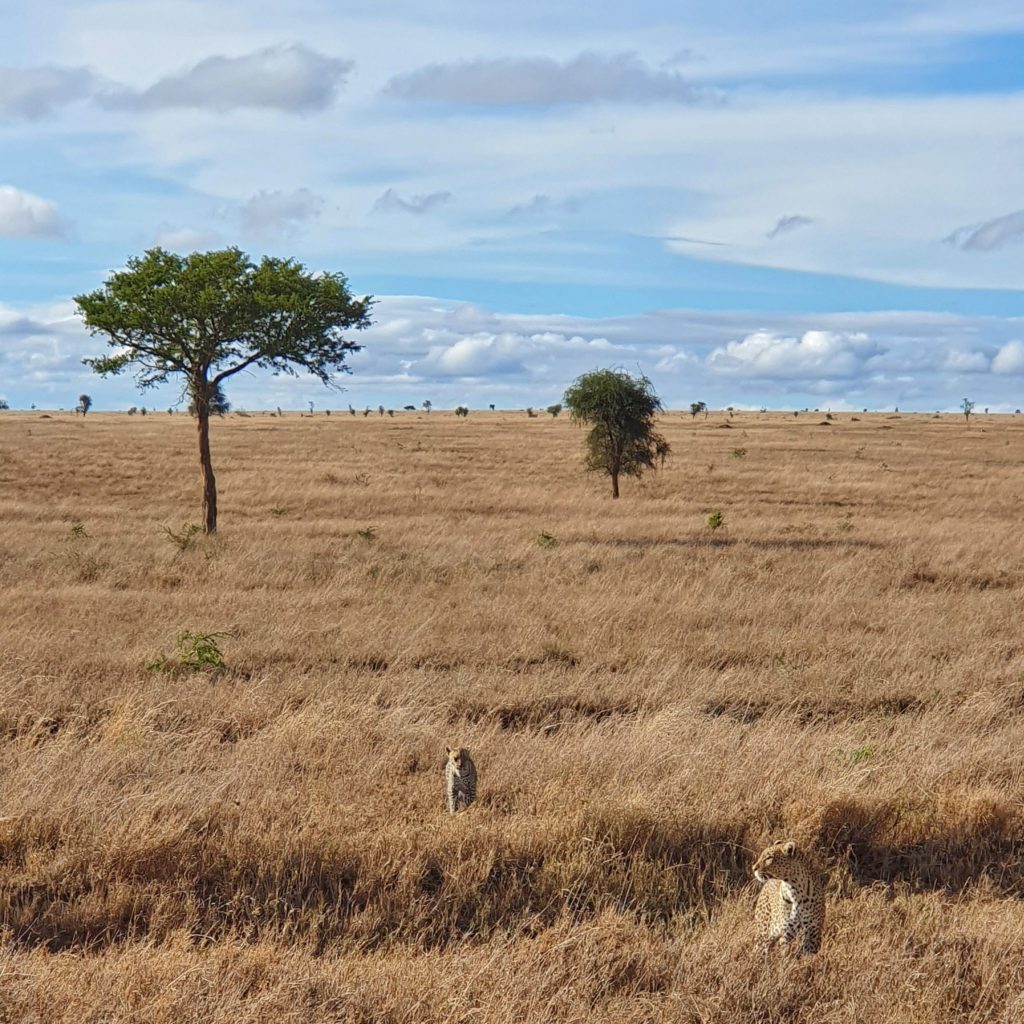
You can also see other big cats like hyenas or cheetahs in the Serengeti. The chance to see one of these animals is bigger than leopards, but definitely smaller than lions.
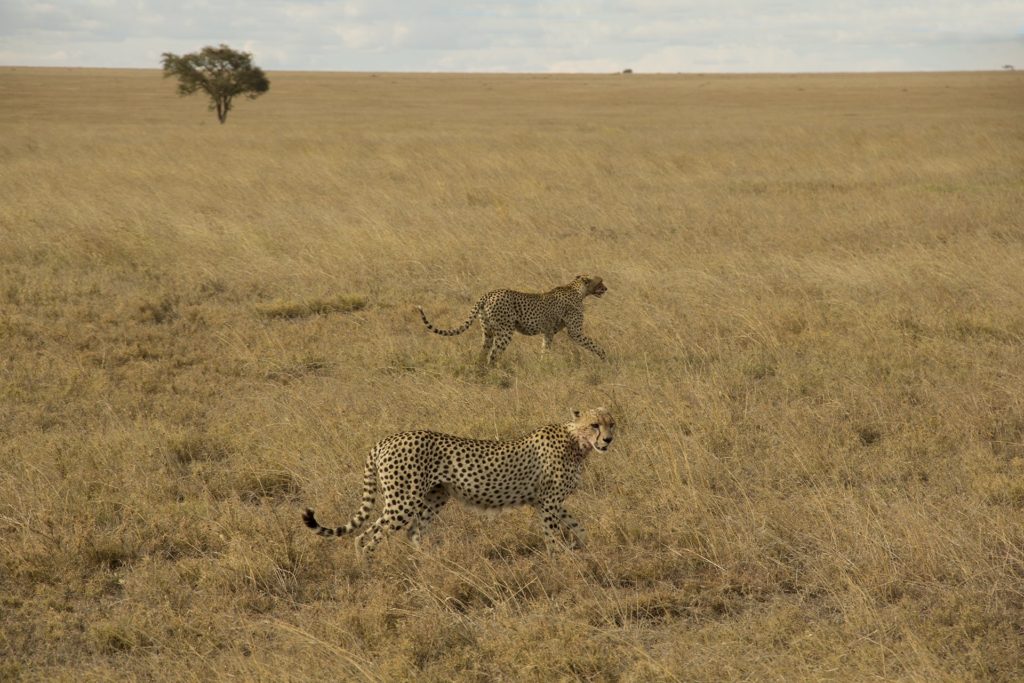
The animals that you will see the most are definitely impalas. These animals seem to be almost everywhere. There are also other kinds of antelopes and zebras that you will see at every corner.
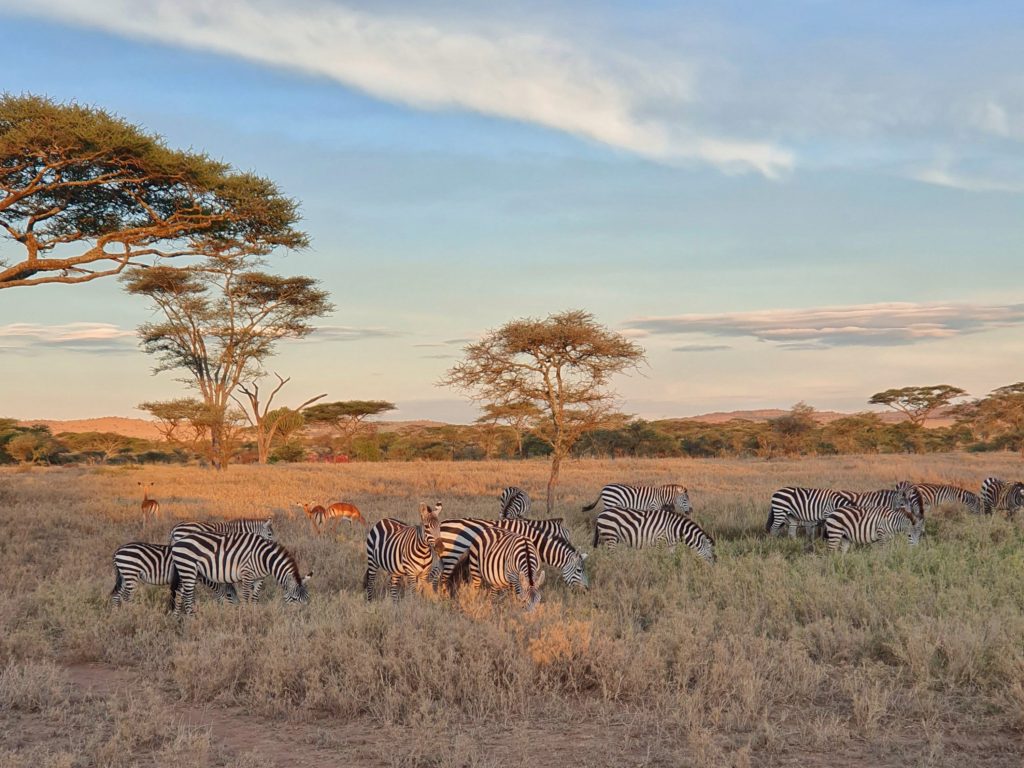
What is the most impressive about the Serengeti besides the fauna is the scenery. The national park consists of a vast expanse and the nature is simply breathtaking. Even the cloud shapes looked as if you were in a world designed with Photoshop.
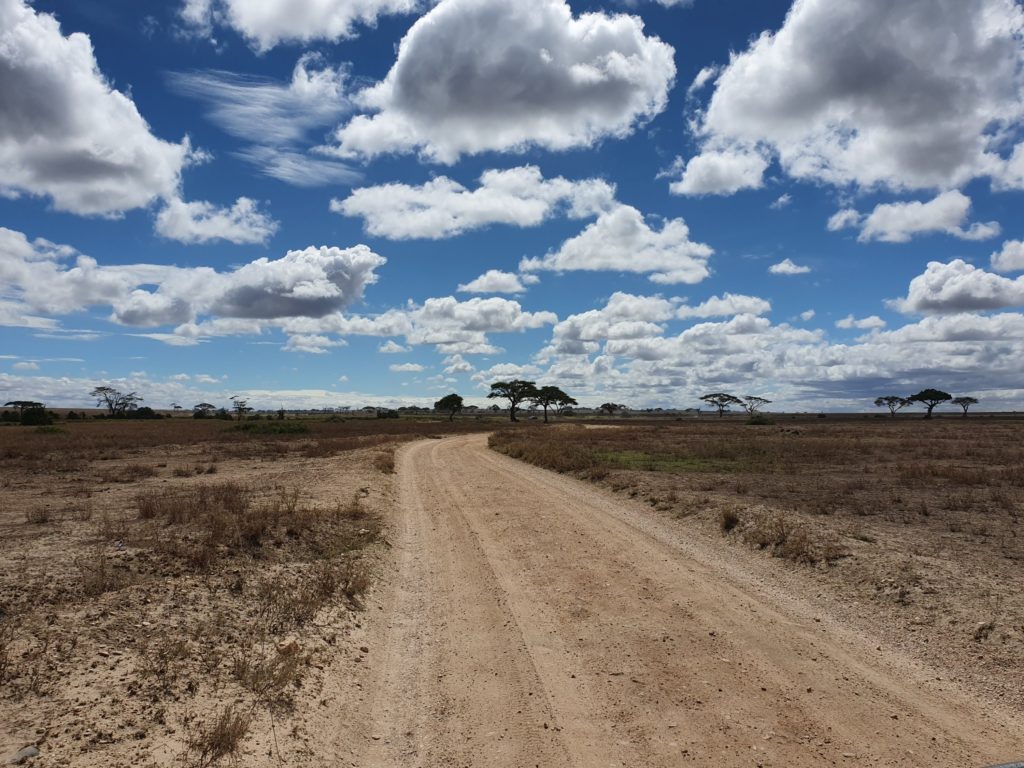
Many safari experts call the Serengeti National Park the best in the world. Due to my limited safari experience I cannot comment on this. However, this park was definitely the best we saw on our trip. My next safari will probably take place in the Etosha National Park in Namibia or in the Maasai Mara in Kenya. I am curious how these two parks will be compared to the Serengeti. But the bar will be very high.
Ngorongoro Crater
Interestingly, the National Park, which after the Serengeti is often called the second best national park in the world, is right next door: the Ngorongoro Crater.
It is definitely one of the most special national parks in the world. Two or three million years ago a volcanic mountain exploded in Tanzania, which generated a crater with an area of 8’300 km2. This crater offers the animals a perfect environment. From food to water, the animals have everything they need in the crater and never have to leave it.
We spent the third day of the safari in the Ngorongoro Crater. Unfortunately, the weather was incredibly bad. It rained sometimes and a thick layer of fog lay over the crater, which affected the quality of our photos. It was also cold. Damn cold.
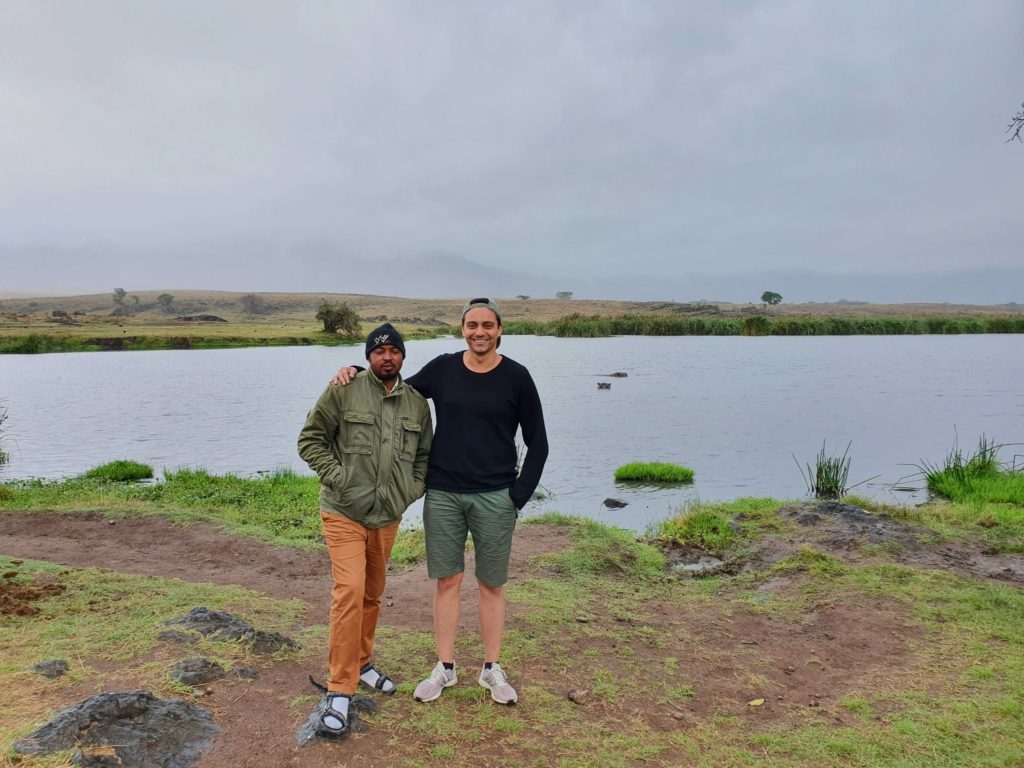
Nevertheless, the Ngorongoro Crater was also quite spectacular. In the crater you can see almost all the animals you see in the Serengeti. The only exception are giraffes. It is said that the crater wall is too steep for them to enter.
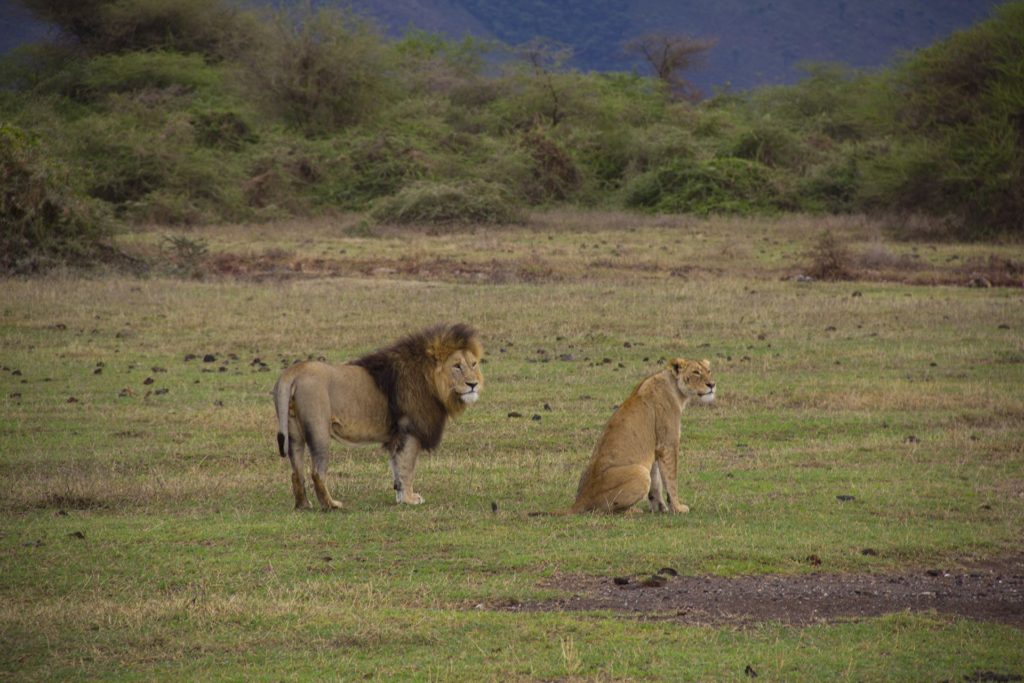
Just like in the Serengeti, in the Ngorongoro Crater you never have to drive long to see an animal. We saw lions, hippos, wildebeests, elephants, hyenas, flamingos and many other animals.
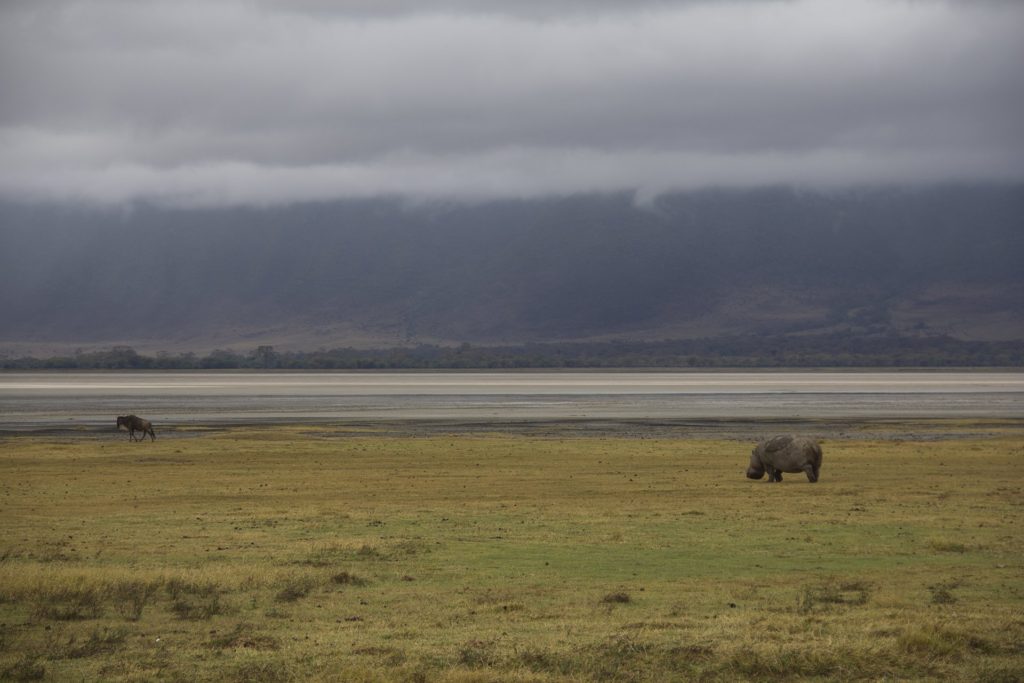
What makes the Ngorongoro Crater special is certainly its landscape. The walls of the crater are omnipresent and sometimes look like a mountain range in the background. Our experience was unfortunately not as fantastic as in the Serengeti due to the bad weather. Anyway, it is a fascinating national park that you have to visit when in Tanzania.
Lake Manyara Nationalpark
On a four day safari, two days are scheduled for the Serenegti and one day for the Ngorongoro Crater. On the fourth day you have to decide whether you want to visit Lake Manyara National Park or Tarangire National Park. We have chosen Lake Manyara.
The reason? It was a coin-flip. The Tarangire National Park is certainly a good choice for elephant fans, but we chose Manyara because of the lake. Generally, the two parks are probably similarly interesting.
The game drive in Lake Manyara National Park was the shortest on the whole safari. We started at 9.30 AM and finished before 13.00 PM However, we also lost time at the entrance, so that the game drive probably lasted at most three hours.
The best way to describe Lake Manyara National Park is probably this: Imagine you are at a festival. On the first day you go to Ed Sheeran and on the second day to Rihanna. On the third day you go to the concert of… Clean Bandit. So certainly not a waste of time, but not on the same level as the days before.
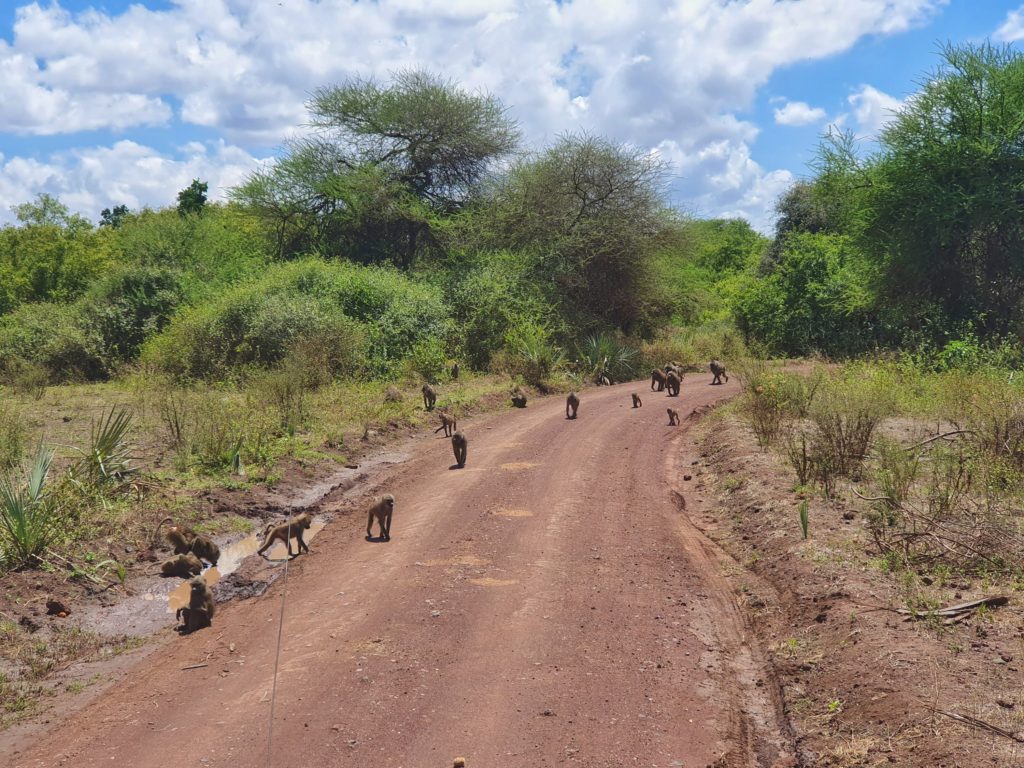
Neither the wildlife nor the nature in Lake Manyare National Park is as spectacular as in the Serengeti or Ngorongoro Crater. We mainly saw monkeys, birds and hippos. However, we did not see any predators and neither elephants nor giraffes.
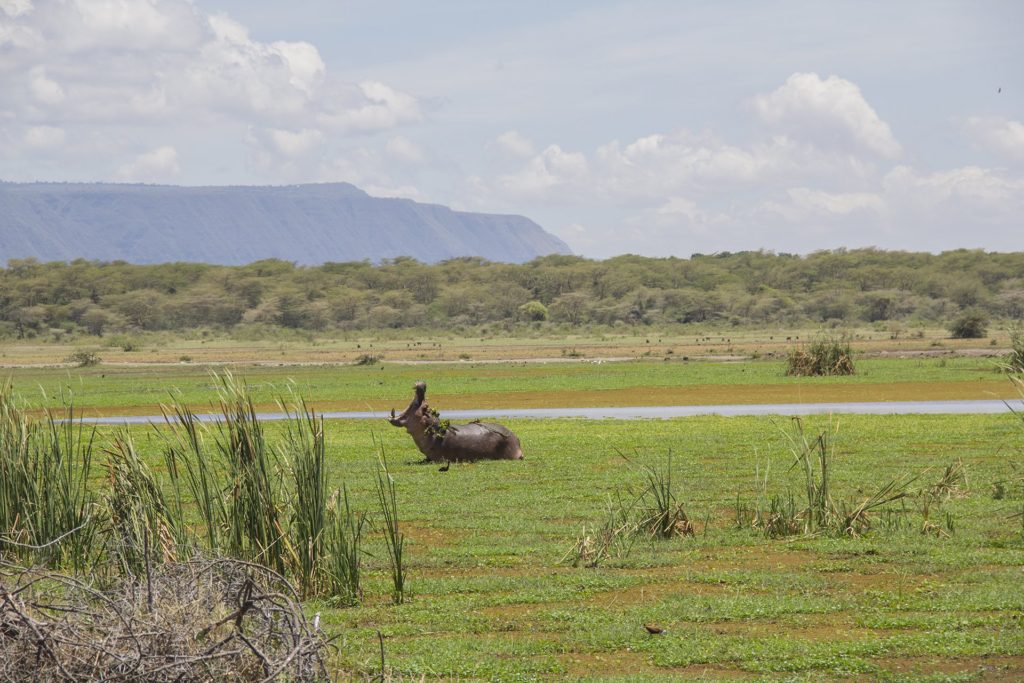
Interestingly, the national park is also called “home of the tree-sleeping lions” as there are lions that supposedly can climb trees. However, we were told at the beginning of the briefing that it was extremely unlikely to see them. So this is probably a little misleading advertising.
The national park was still beautiful and interesting. I would advise you to visit this park (and also the Tarangire National Park) before the Serengeti and the Ngorongoro Crater. As an introductory safari the park is quite okay. As the end of a 4-day safari it is a bit underwhelming, though.
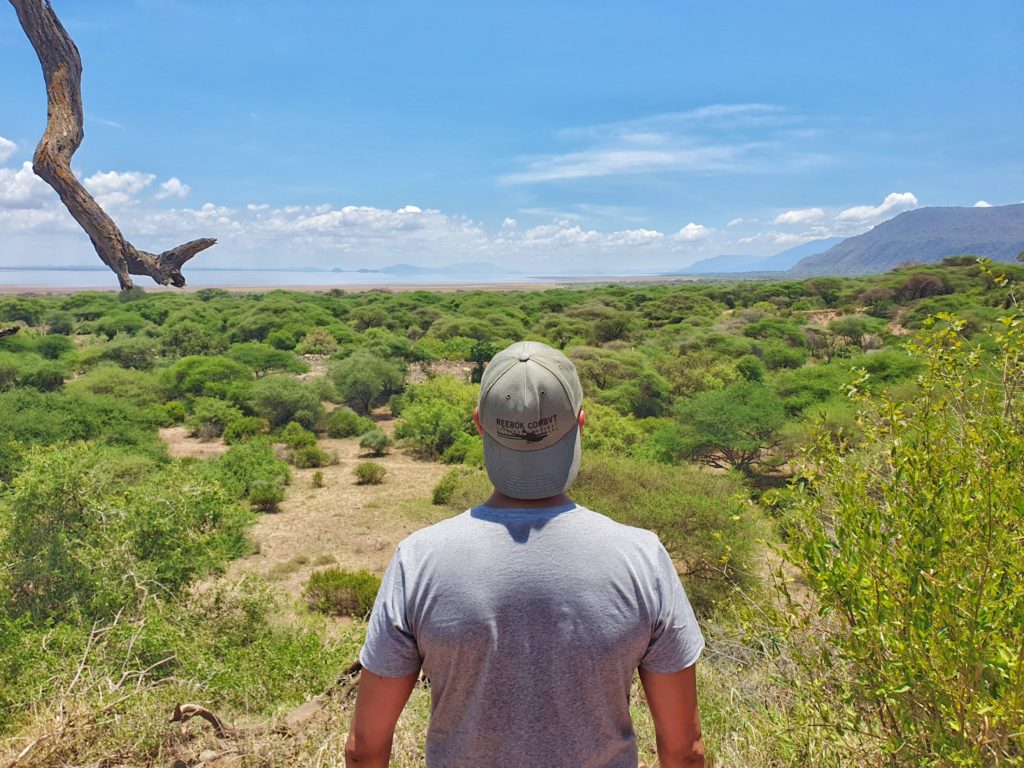
Sleeping in the bush
Since we booked a budget safari, we slept only on camp sites. And let me tell you something, the nights were adventurous…
The first night, we slept on a camp site without fences or any other barrier in the middle of the Serengeti. Before we went to bed, our guide said that there could be hyenas or lions at night. “Don’t run away if you see them. Just put a flashlight in their faces. They don’t like that,” was his advice for the worst-case scenario.
There are also showers on the camp sites that are anything but nice, but in the end they serve their purpose. When we moved into our tent and prepared for dinner, I briefly went to the showers to wash myself. When I got out of the showers again, I saw it about fifteen meters away from me: a hyena.
Hyenas always look cute on television despite their ugly faces. That these beasts can be bigger than most dogs and can weigh up to 65 kilograms is hardly noticeable on TV. And so this creature stood there in the woods next to the campground and waited. It waited until everyone went to sleep so that it could look for food leftovers.
What is the night like under these conditions? Depends on the person you ask. Mine was sensational because I slept like a baby. However, Kati woke me up at around 4 AM. Apparently, the hyenas (there were more than one of them now) made a huge noise on the camp site. For Kati the tolerance limit was reached when they started to play with our tent.
Nothing happened in the end and the hyenas left at some point. But many people didn’t have a pleasant night because of the animals. The hyenas didn’t really bother me. After all, humans are not food for them. But I can understand than sleeping in a tent surrounded by hyenas can be a frightening experience.
If you choose a budget safari, you have to be prepared for such a night. “I even heard a lion roar in the distance,” Karim said the next morning. I guess, many people were frightened after the night. But hey, safari is supposed to be an adventure.
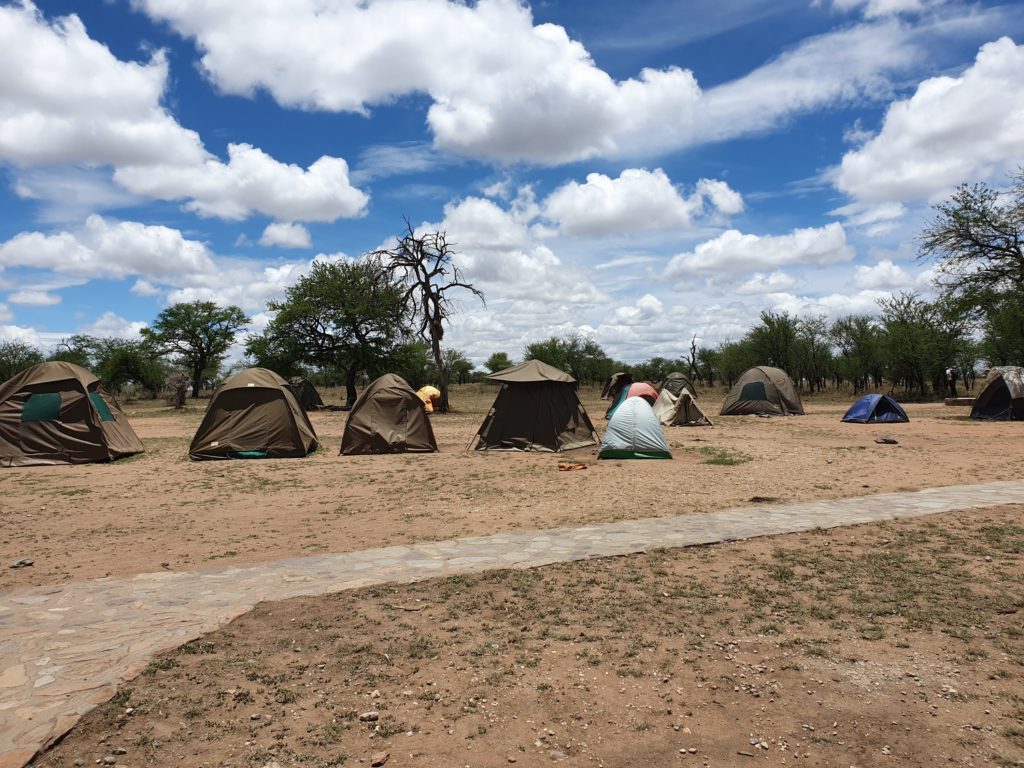
The second night was the worst for me. That was the night before the Ngorongoro Crater tour, where we slept on the crater rim. The rim of the crater is at 2,300 meters and thus it is cold there. We were not really prepared for these temperatures, because we only had one pullover per person with us for the whole trip.
Although our guide lent us a jacket and gave us two sleeping bags instead of one, it didn’t change the fact that it was freezing cold at night. The temperatures were somewhere between 5 and 10°C. As if that wasn’t enough, it rained a lot during the night. Unfortunately, our tent could not repel all the water, so that it became quite wet at certain places.
Furthermore, the showers on this camp site were disgusting (and the women had only cold water in theirs). Although the campsite was fenced in, I felt much more uncomfortable there than among the hyenas and lions.
The third night was by far the most relaxing. We stayed at the camp site near Lake Manyara where we met Karim and Shaar on the first safari day. This camp site could also have been called a hostel, because it was a nice place with big tents that even had beds in it. The beds were not very comfortable, but still better than the mattresses in the tents before.
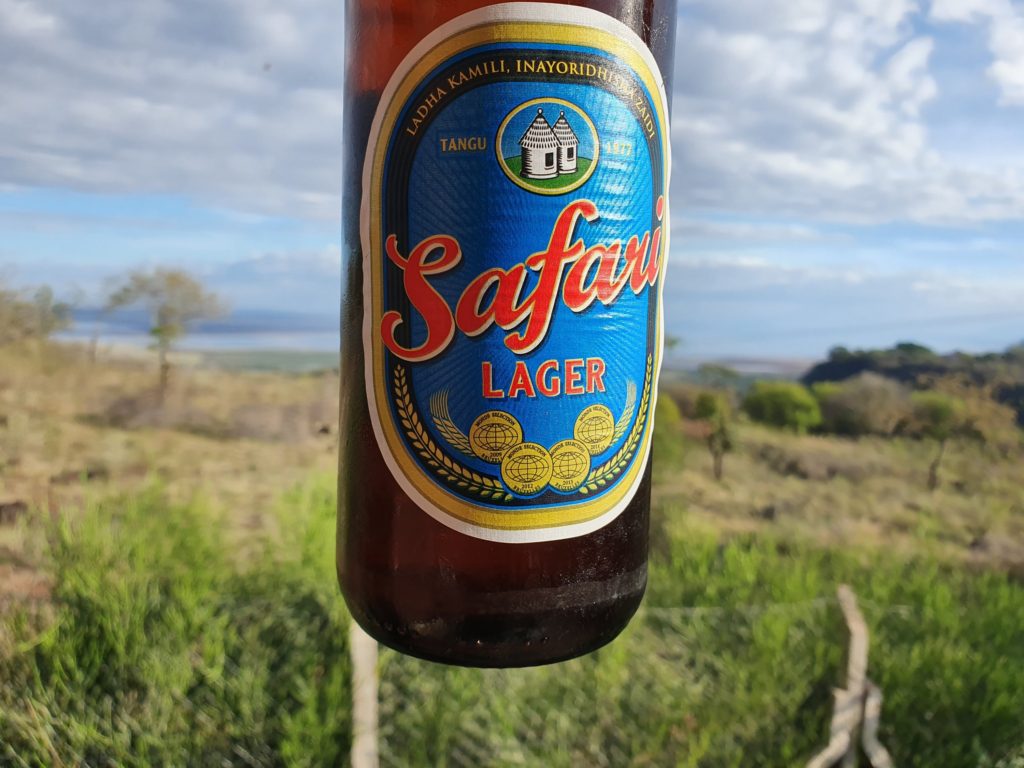
Conclusion after four days safari in Tanzania
The safaris on this trip – in Tanzania and in the countries we visited before – were the first in my life. While the safaris in Eswatini and Malawi were cool, the one in Tanzania was outstanding. I would even call this safari one of the best travel experiences I have ever had.
On the one hand this is certainly due to the fact that there is an abundance of animals in the national parks in Tanzania. But it was also the incredible nature in the Serengeti and in the Ngorongoro Crater that thrilled me. I would really like to recommend everyone to make such a safari in Tanzania. You will not regret it.
However, there were some misunderstandings or remarks I would like to share with you. I was always of the opinion that a safari is the “right” way to observe animals. But during the safaris in Eswatini, Malawi and Tanzania I learned that the animals are not always left in peace as you would expect.
Especially in the Serengeti, it is not uncommon to find a lion and two minutes later ten safari vehicles form a semicircle around the animal. The most extreme was when we discovered the two leopards. It didn’t take long until 23 (I counted them) cars followed the animals into their hiding place. The animals were not impressed, but I don’t know if they really felt comfortable.
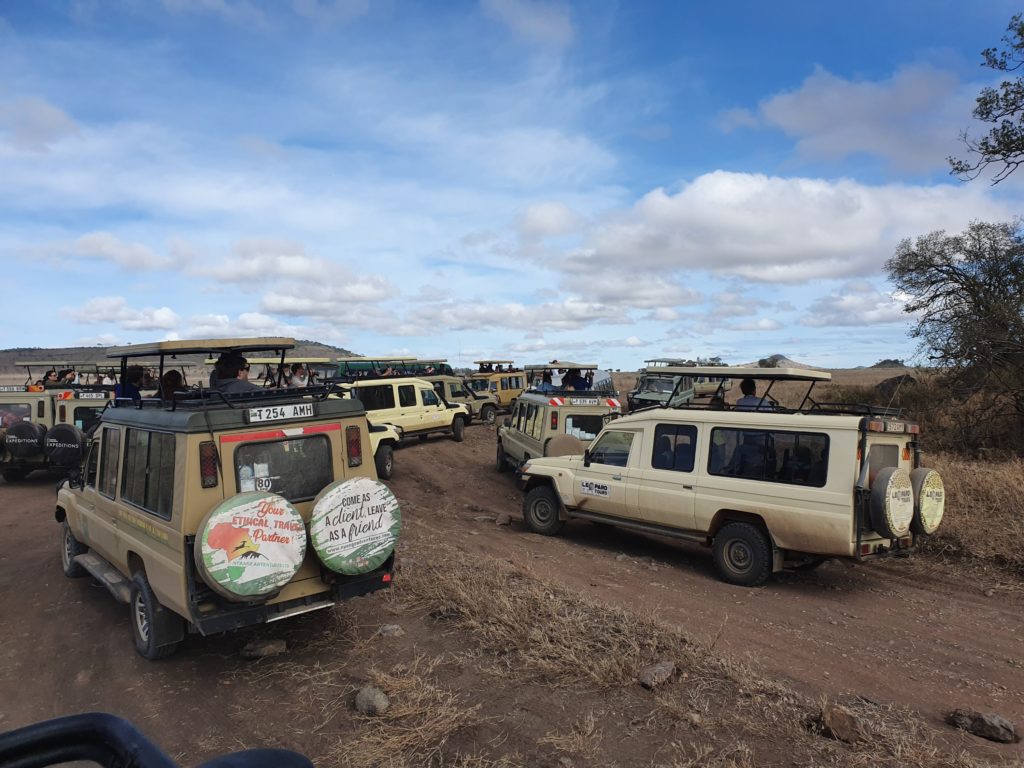
On TripAdvisor I even read that someone complained because his guide wanted to wake up a sleeping lion by throwing a pet bottle at him. Such a behavior is the exception, but still… it is not as if the presence of humans does not affect the animals.
Zanzibar
Four nights in Zanzibar marked the end of our Africa trip. We spent three nights in Nungwi in the north and one in Stone Town.
Zanzibar is an incredibly beautiful island in the Indian Ocean with white beaches and turquoise waters. A tropical paradise and for everyone a good place to relax after exhausting days in the Serengeti or on Kilimanjaro.
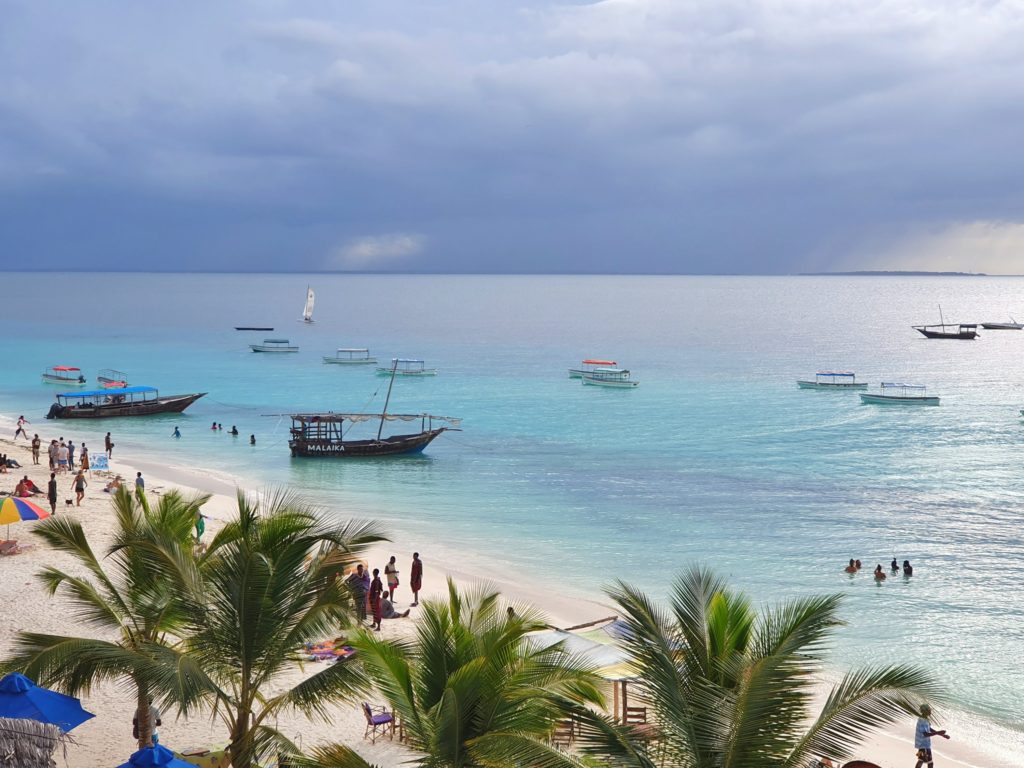
The days in Nungwi do not really fall into the category of travel. It was holidays. That means doing nothing, lying around at the pool and taking a walk on the beach. Although we had bad luck with the weather, we could enjoy the days there very much. It goes without saying that resort holidays at the beach of Zanzibar have nothing to do with the “real” Africa.
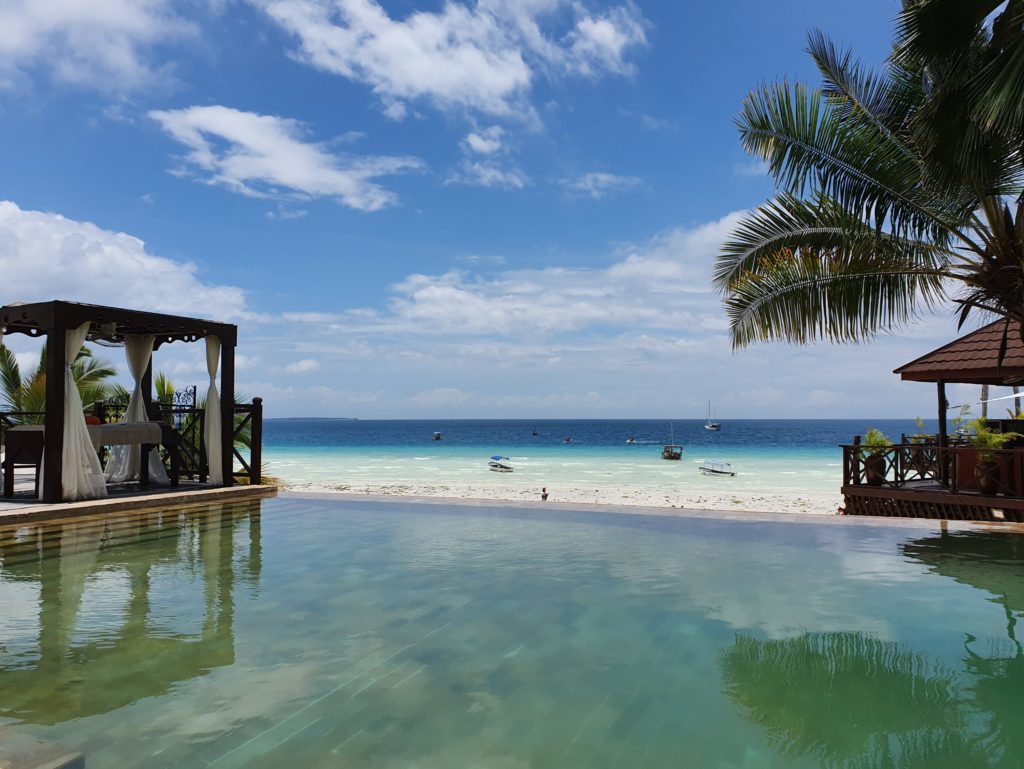
Nungwi is a tourist hotspot, but honestly I expected it much worse. Of course, this can look different in the high season, but the beaches were not really crowded. The ratio between the beach boys, who want to sell you all kinds of things, be it boat trips, taxi rides to the airport or drugs, and tourists was almost balanced.
Disappointing Stone Town
After Nungwi we spent another night in Stone Town, the oldest part of Zanzibar’s capital Zanzibar City. Stone Town is a maze of winding, narrow alleys in which you can easily get lost. The buildings are very old and have centuries of history behind them. There are many people who call Stone Town their favorite place in Tanzania or even in the world.
Stone Town is the cultural heart of Zanzibar. The island used to be an important trade hub between Africa, Europe, India and the Arab world due to its geographical location. So it is not surprising that the island already had many foreign rulers. At some point, it was the Portuguese, then the Arabs and later the British. This mixture of cultures, which influenced Zanzibar, make today’s Stone Town a unique city. Since 2010 it is also a UNESCO World Heritage Site.
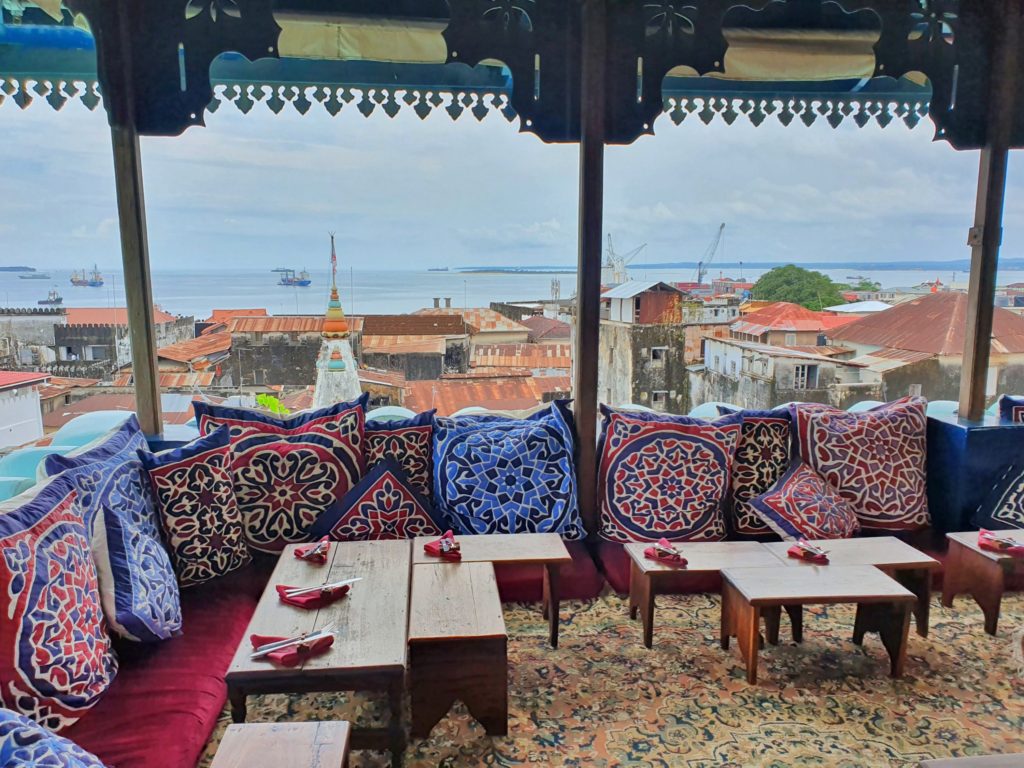
There are some interesting things to see in Stone Town. For example the old slave market in the center of Stone Town. Zanzibar was also a trading center for slaves. Thousands of African have been shipped to the world from Zanzibar. The island was even the largest slave market in East Africa. In the museum in Stone Town you can learn more about this dark chapter of history.
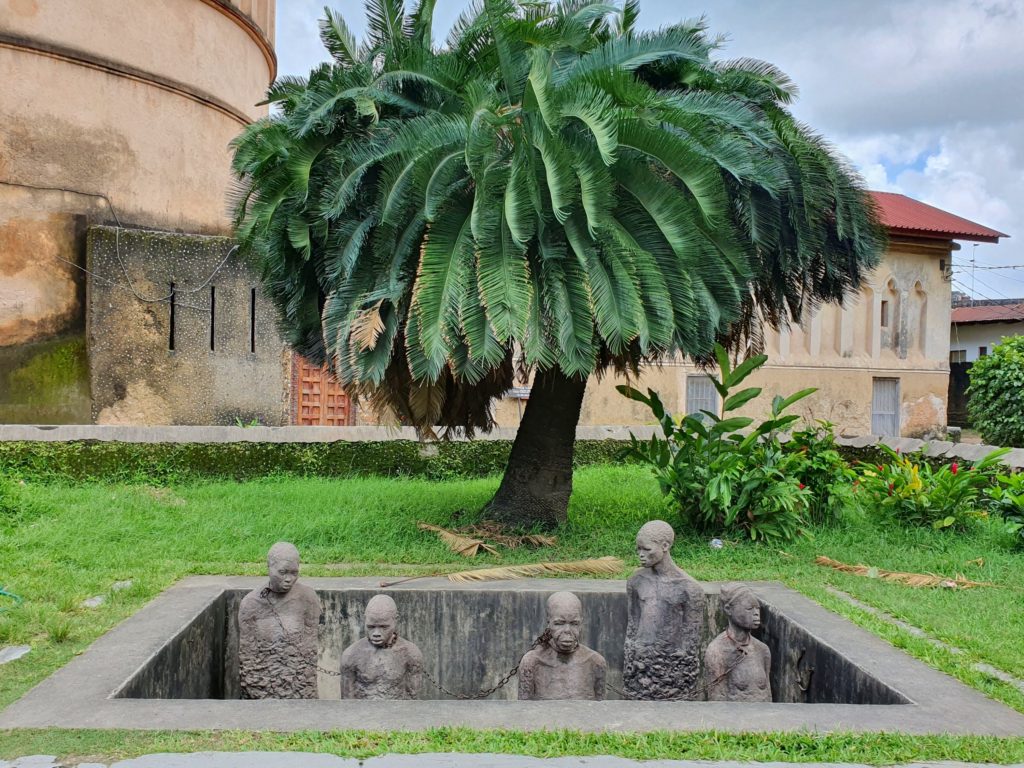
There is also the Old Fort, the night market called Forohdani Gardens or the beach promenade as places where you can spend time. By the way, did you know that Freddie Mercury was born in Zanzibar? His house is still a tourist attraction (but not worth a visit).
For me, Stone Town was one of the places I had been looking forward to the most on this trip. But the magic of the island somehow didn’t jump over to me. I could cope with the numerous touts, which showed a level of harassment I did not know yet, but what really bothered me was how run-down and dirty Stone Town was.
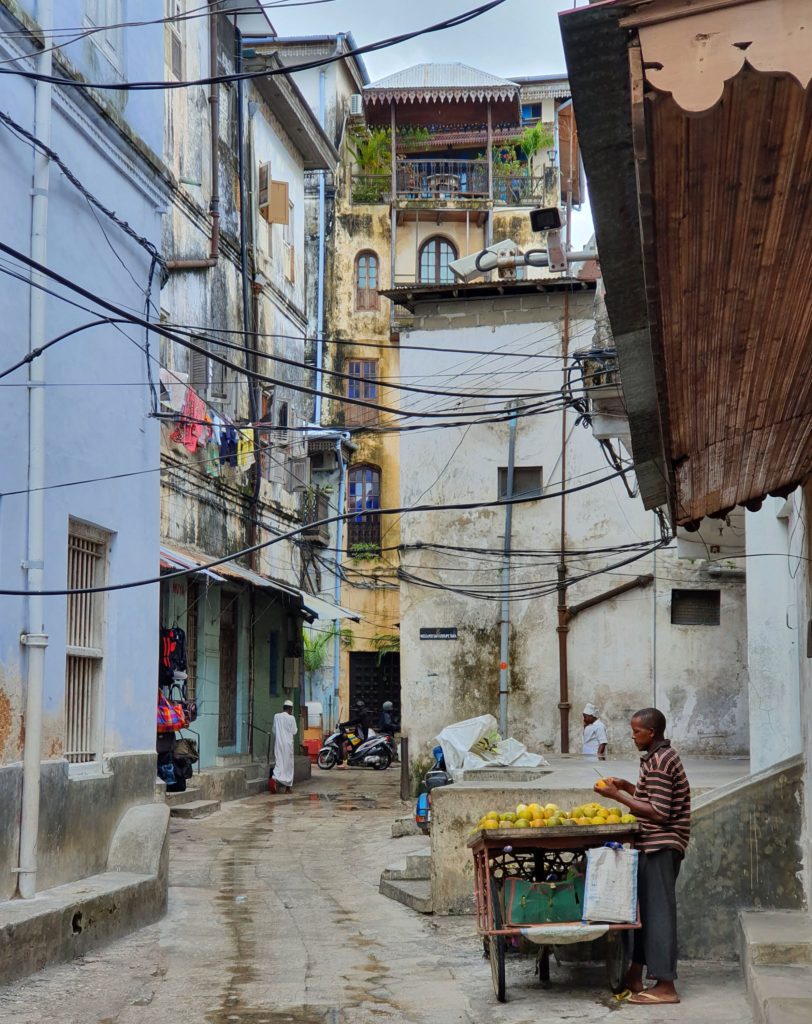
The whole part of town is very badly maintained. Some will say that this way Stone Town keeps its authenticity. But I think that Stone Town loses all its charm because most houses look as if they are about to collapse. I really haven’t seen a single house without a completely devastated facade.
What surprises me the most is that you don’t read a single negative opinion about Stone Town online. Neither in blogs, nor in the TripAdvisor forum, nor anywhere else. Everyone, really everyone, is totally enthusiastic about this place. That’s why I was so excited about Stone Town and all the more disappointed when I saw it with my own eyes. Our 1.5 days in Stone Town were still okay, but it’s a place I won’t visit again.
However, I can well imagine visiting Zanzibar again. Kati and I even found it a pity that we had to leave. It was the only place during this Africa trip where we would have liked to stay longer. For those who would like to go to Zanzibar I would recommend at least one week. So you could spend three days in the north, three in the east and one in Stone Town.
Tanzania as a travel destination
Tanzania is a fantastic travel destination. My travel experiences in this country are among the best I have ever experienced. The safari exceeded all my expectations and Zanzibar was an amazing island.
Tanzania is a perfect country for Africa beginners as it is very easy to travel due to a very good tourist infrastructure. The country also offers exactly what most people expect from Africa travel: diverse wildlife, beautiful national parks, dream beaches and nice people.
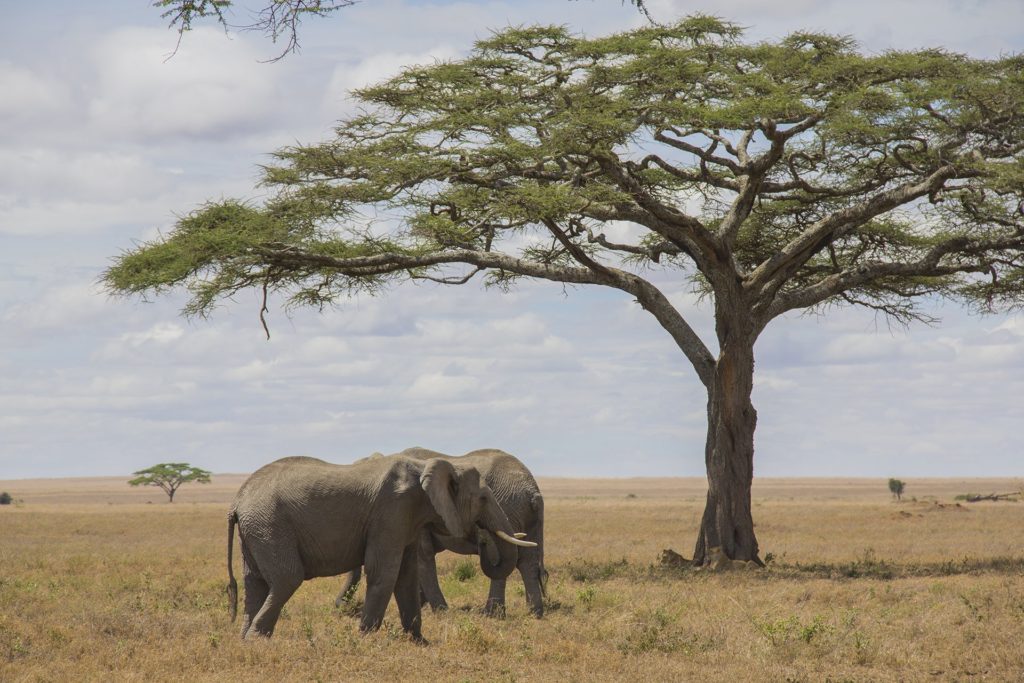
So if you want to travel to a country in sub-Saharan Africa for the first time, Tanzania is certainly a good choice. Alternatives for Africa beginners would otherwise be South Africa or Kenya, with Tanzania probably being the better option than South Africa in terms of safety and definitely better than Kenya, where the number of terrorist attacks has increased in recent years. Generally, I would not consider the dangers in Tanzania higher than in popular South American countries such as Peru or Ecuador.
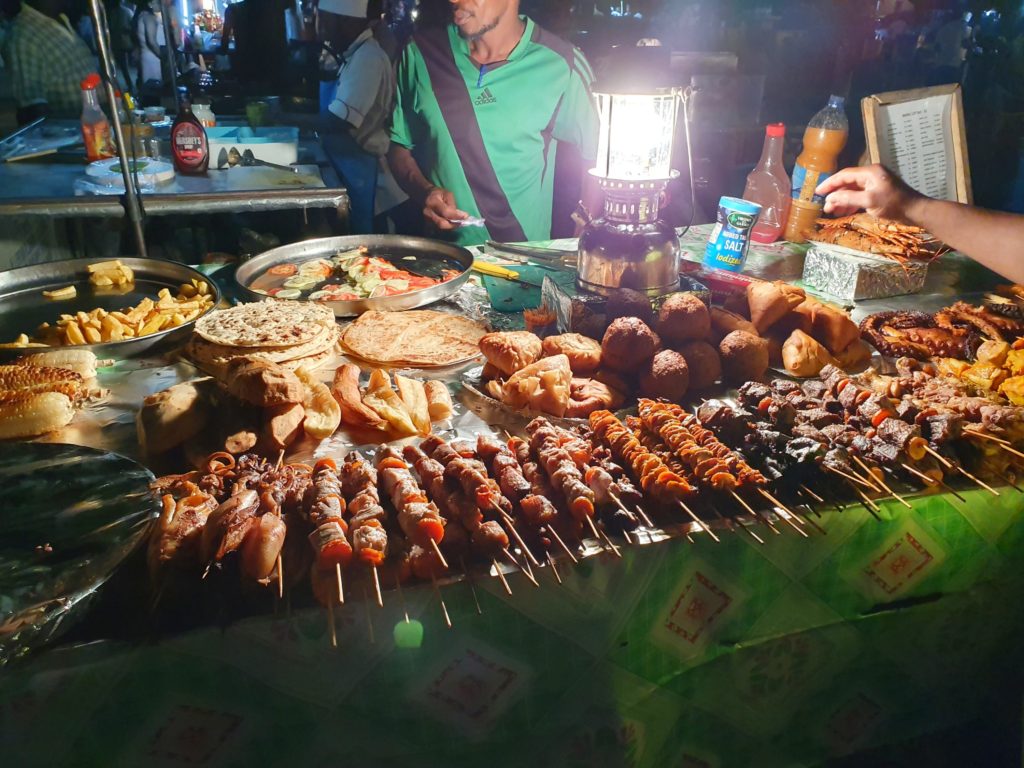
You should only consider that during a safari you don’t get to experience the real Africa. Neither do you when you’re by the pool in your resort in Zanzibar. Therefore, you basically live in a tourist bubble during in the national parks and in Zanzibar, and probably see more white than black people. Thus, Tanzania is for many people a good country to get a small foretaste of the real Africa. But you will experience the real Africa in other countries, unless you travel to less touristy places in Tanzania.
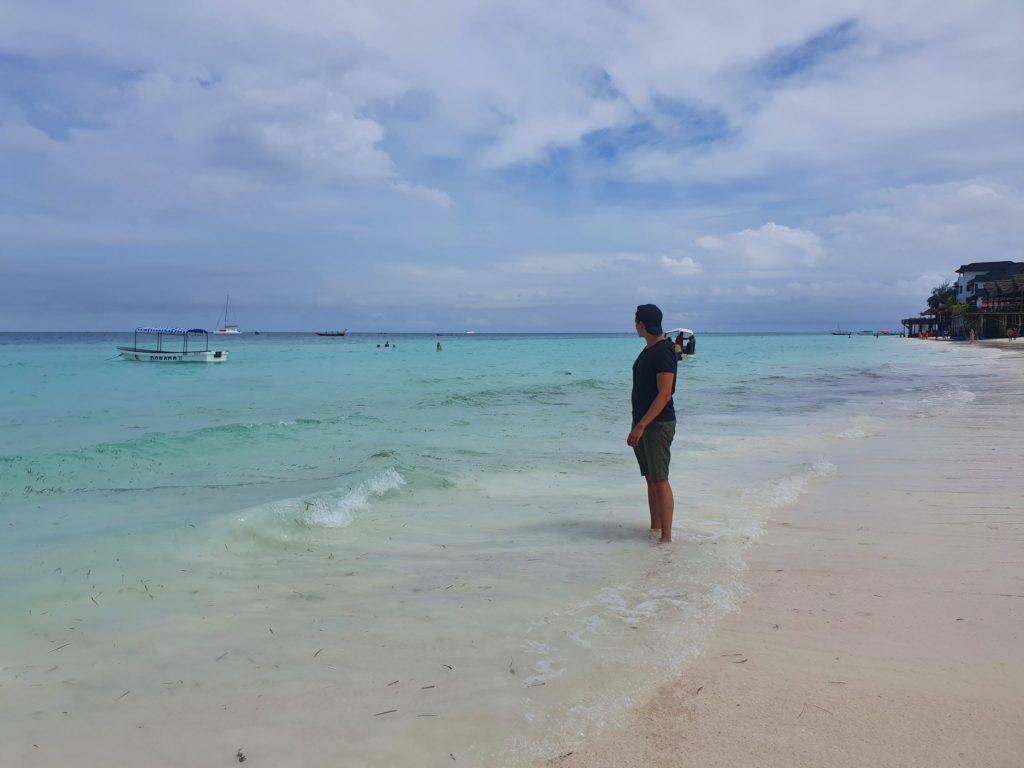
There is the possibility to see and experience more untouched places in Tanzania. The tourist masses mainly visit the northeast of the country. Already a trip to Lake Victoria in the northwest will probably show a more authentic picture of Tanzania. If you want it even more authentic, you can explore the south of the country and, if you like, travel to Malawi overland.
People often ask me what I will do when I have been to every country in the world. My answer is always that I will travel back to the countries that I enjoyed the most and visit all the places I didn’t on my first visit. Tanzania will certainly be one of those countries. But then there will not be a safari, there will be a hike on Kilimanjaro.
